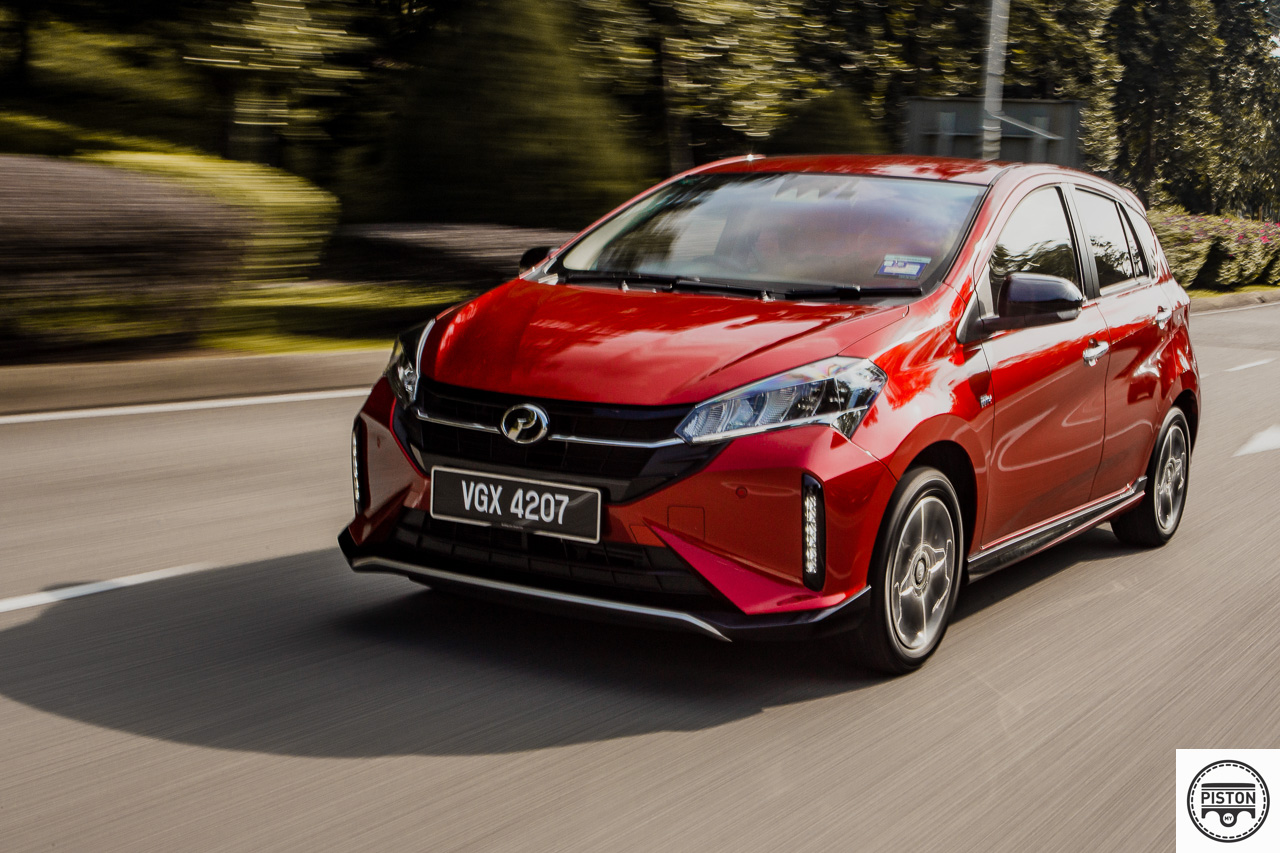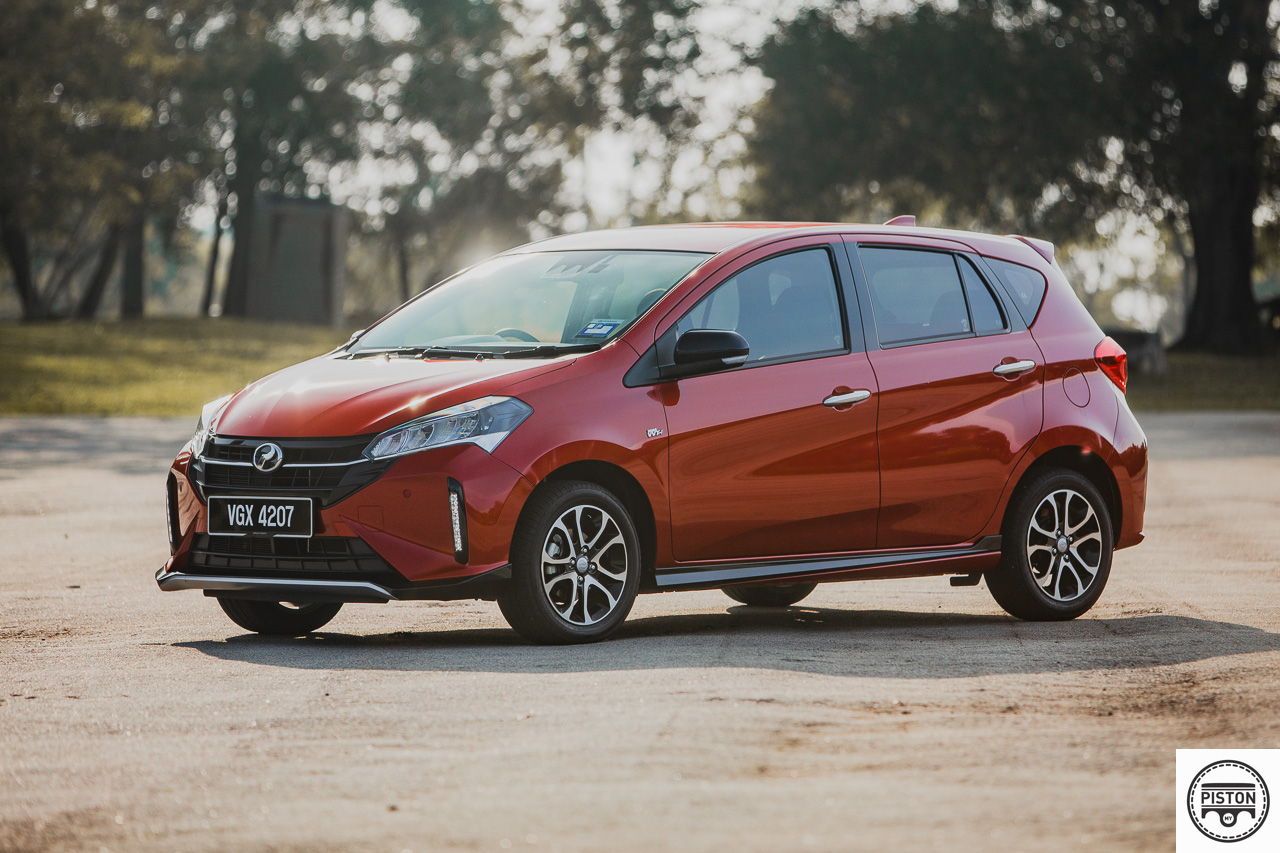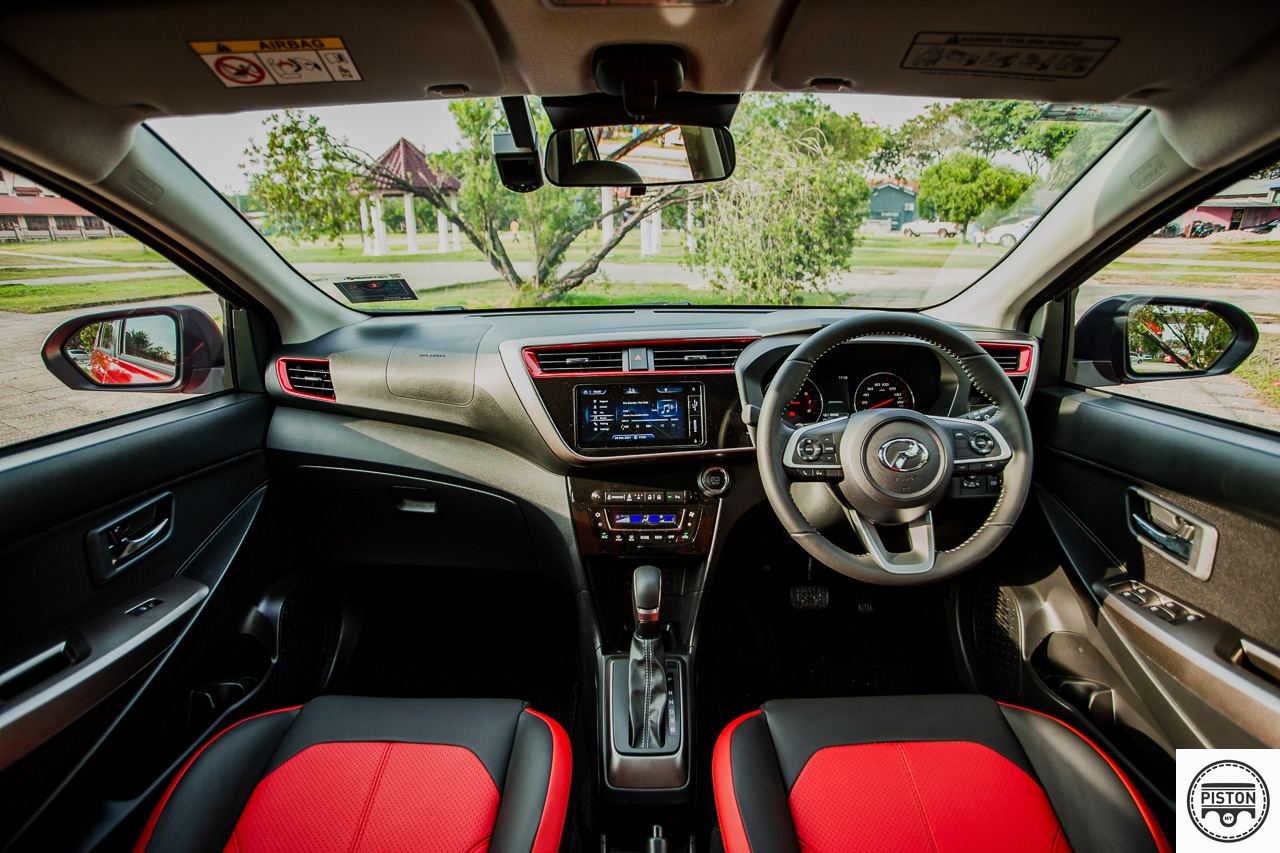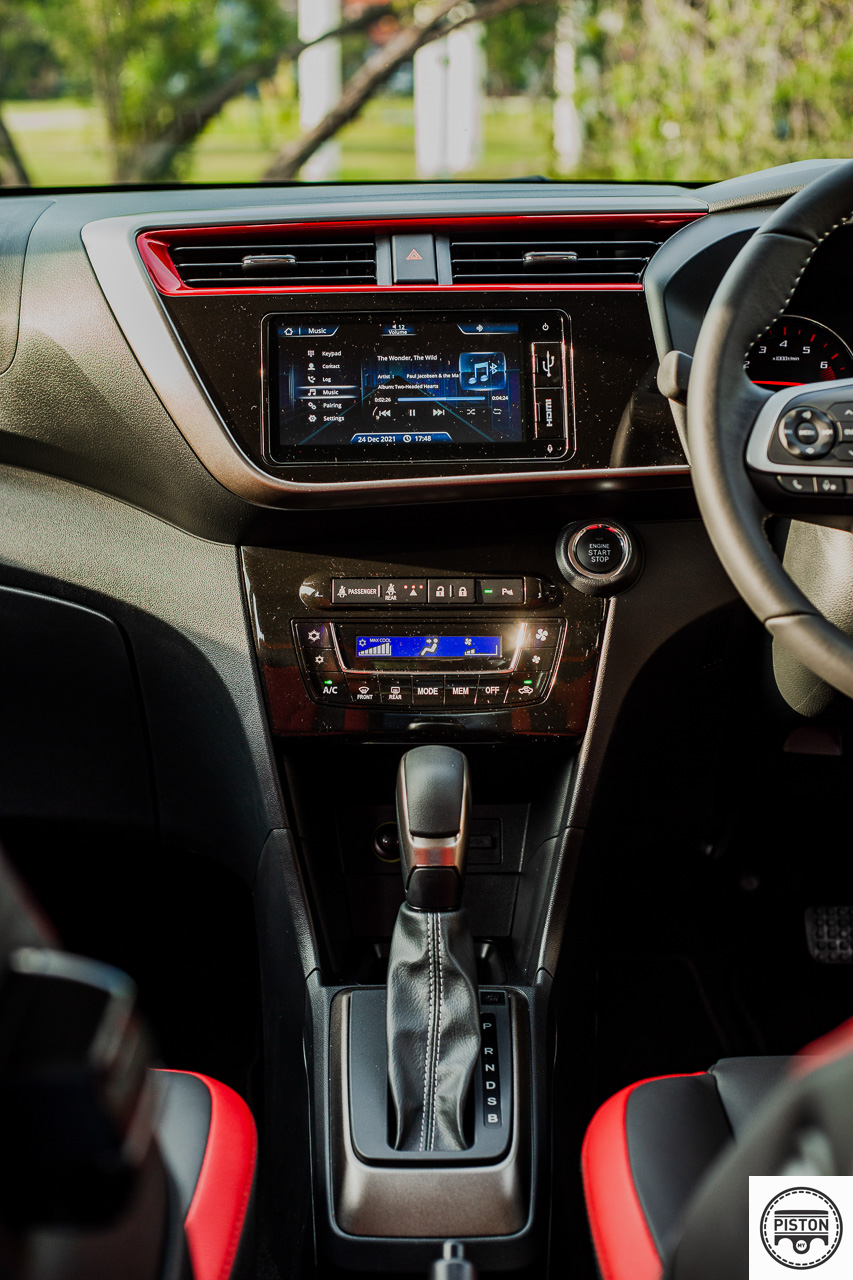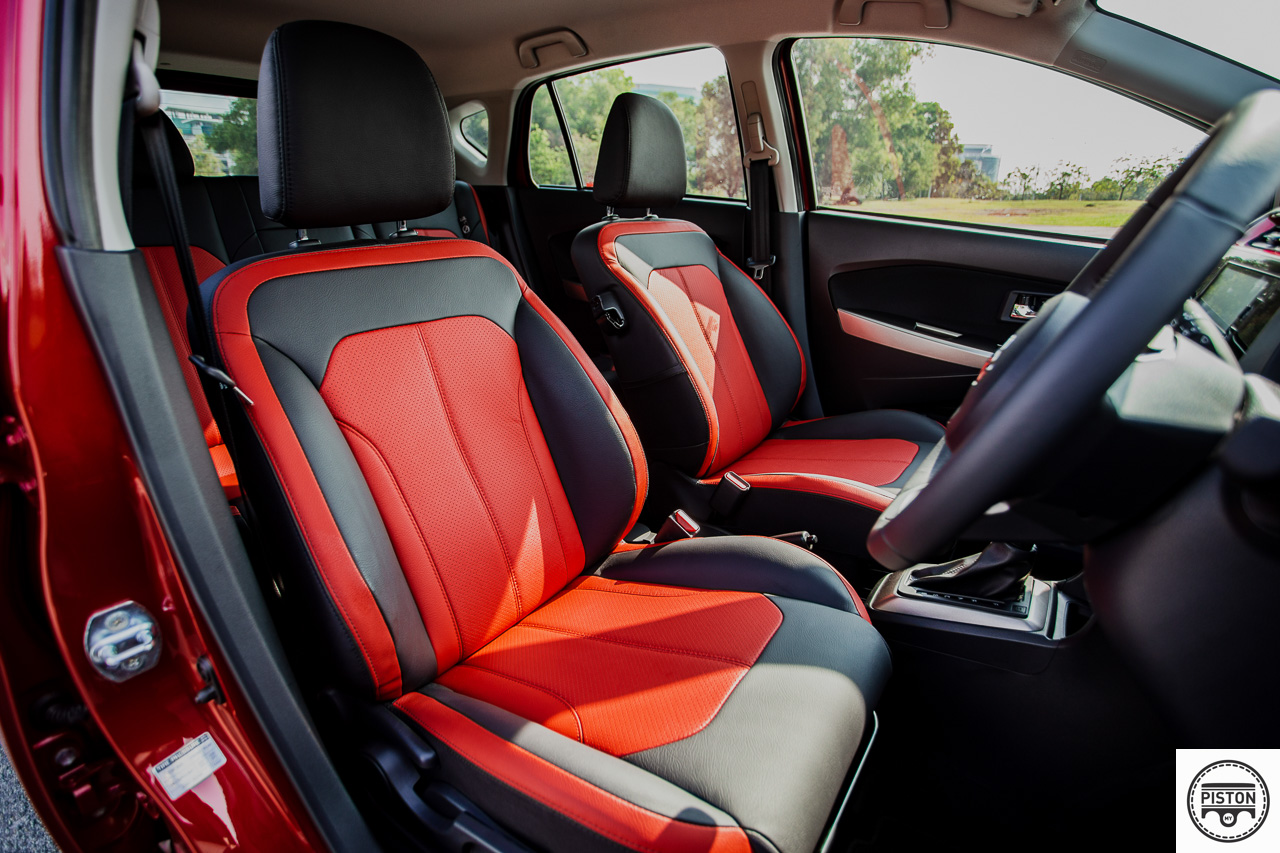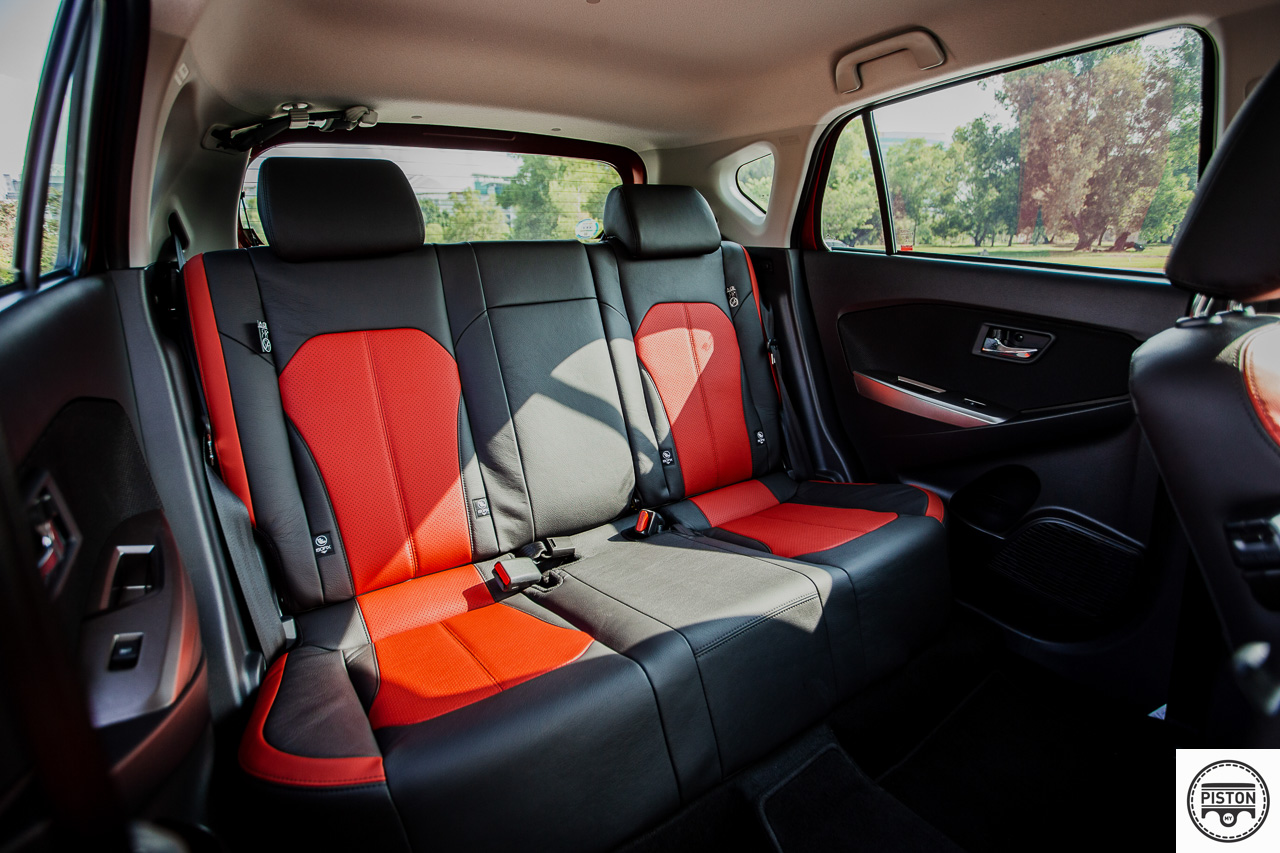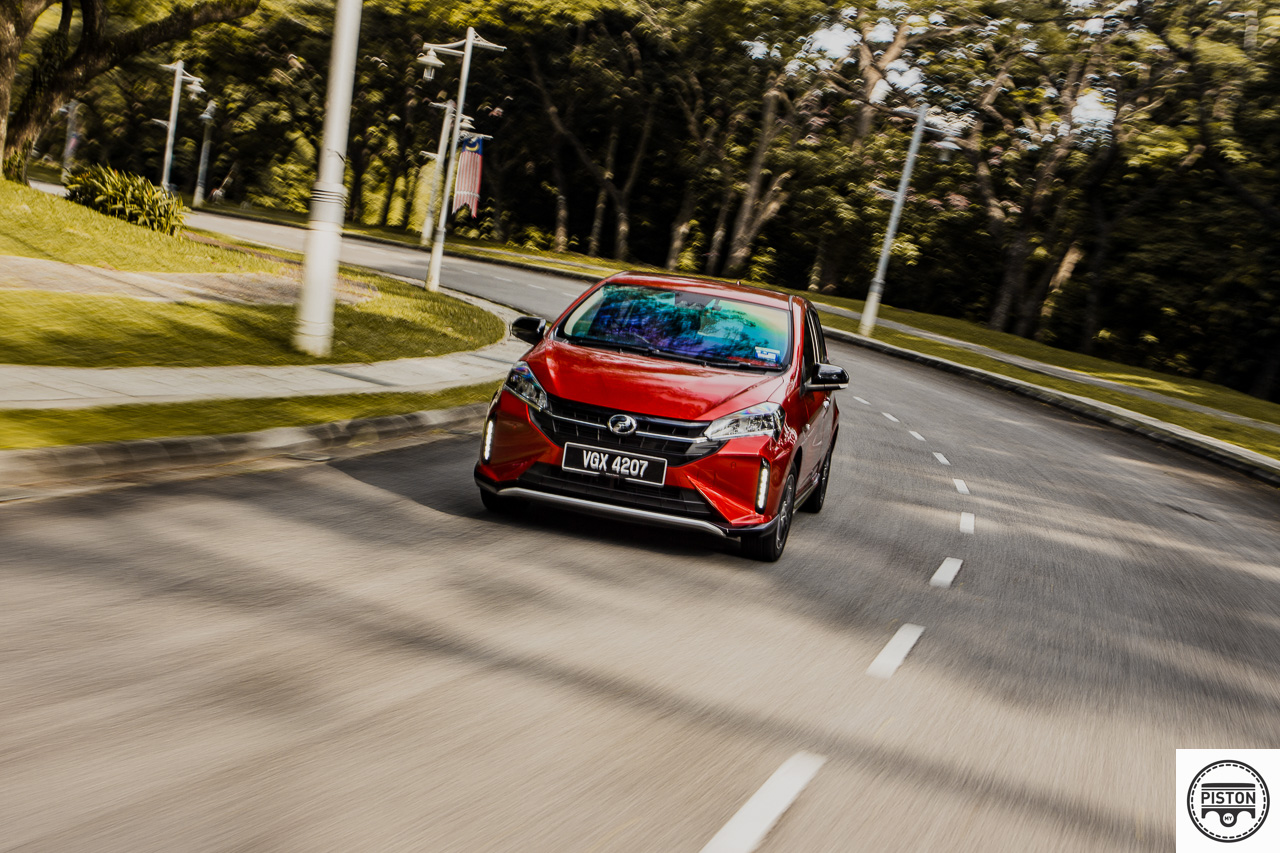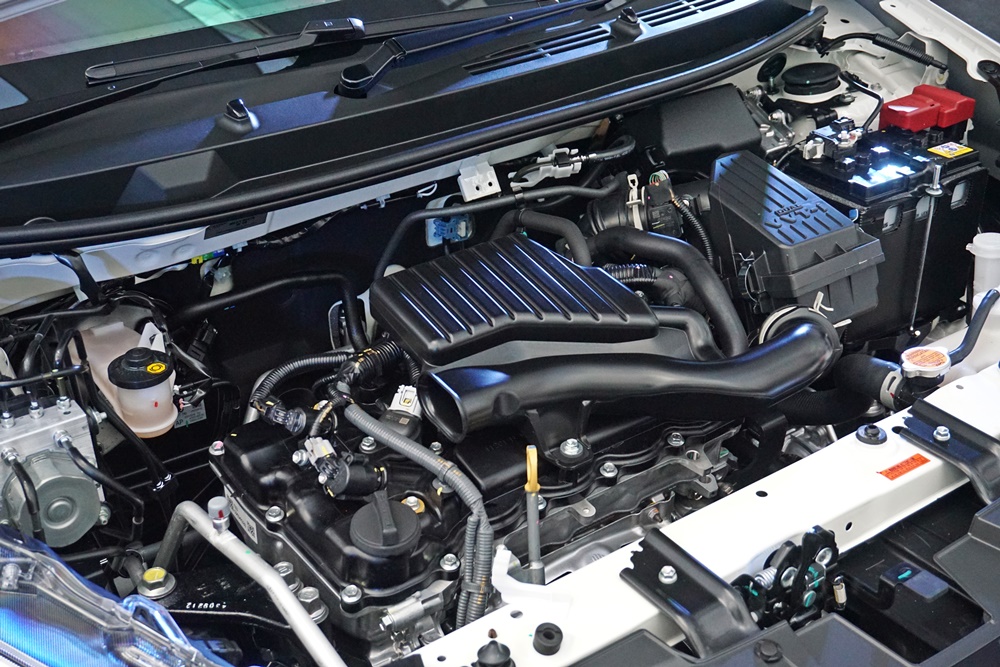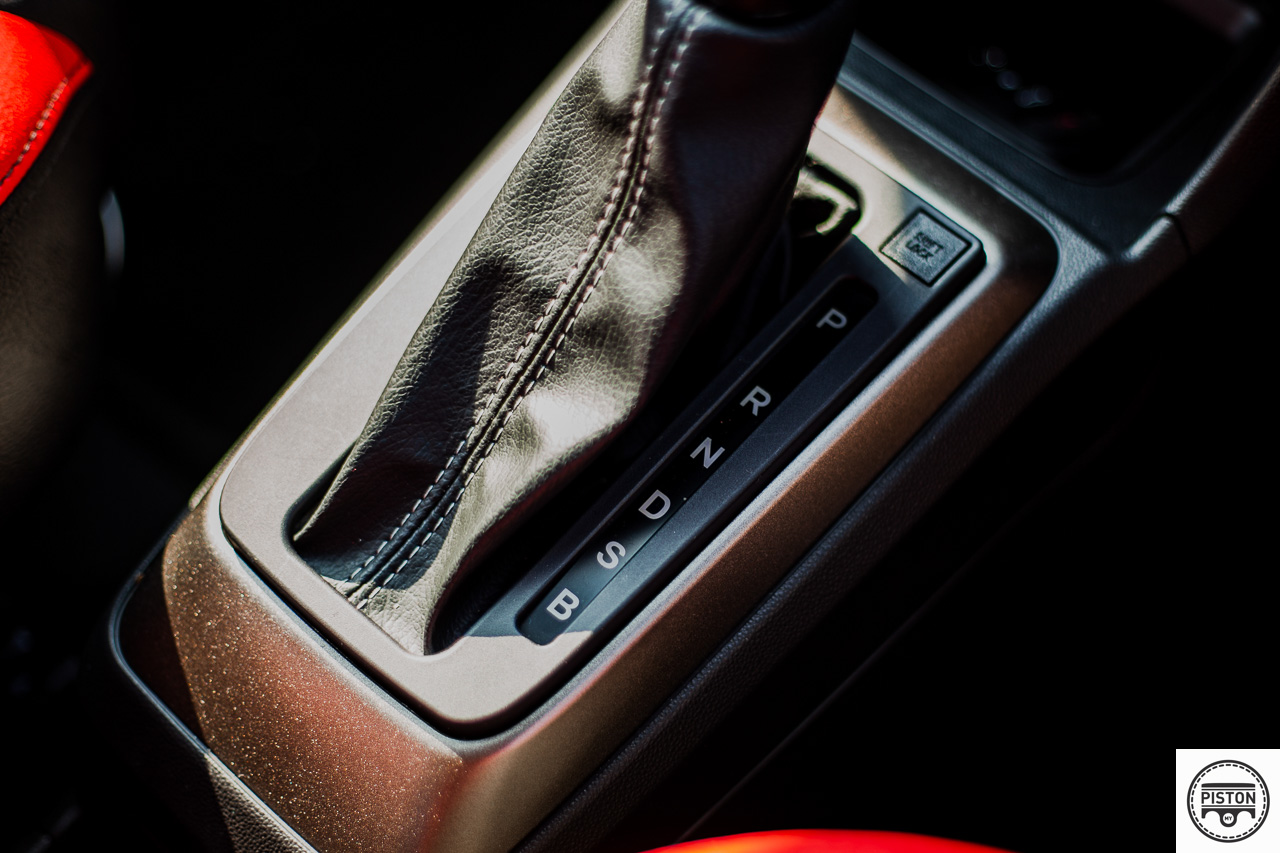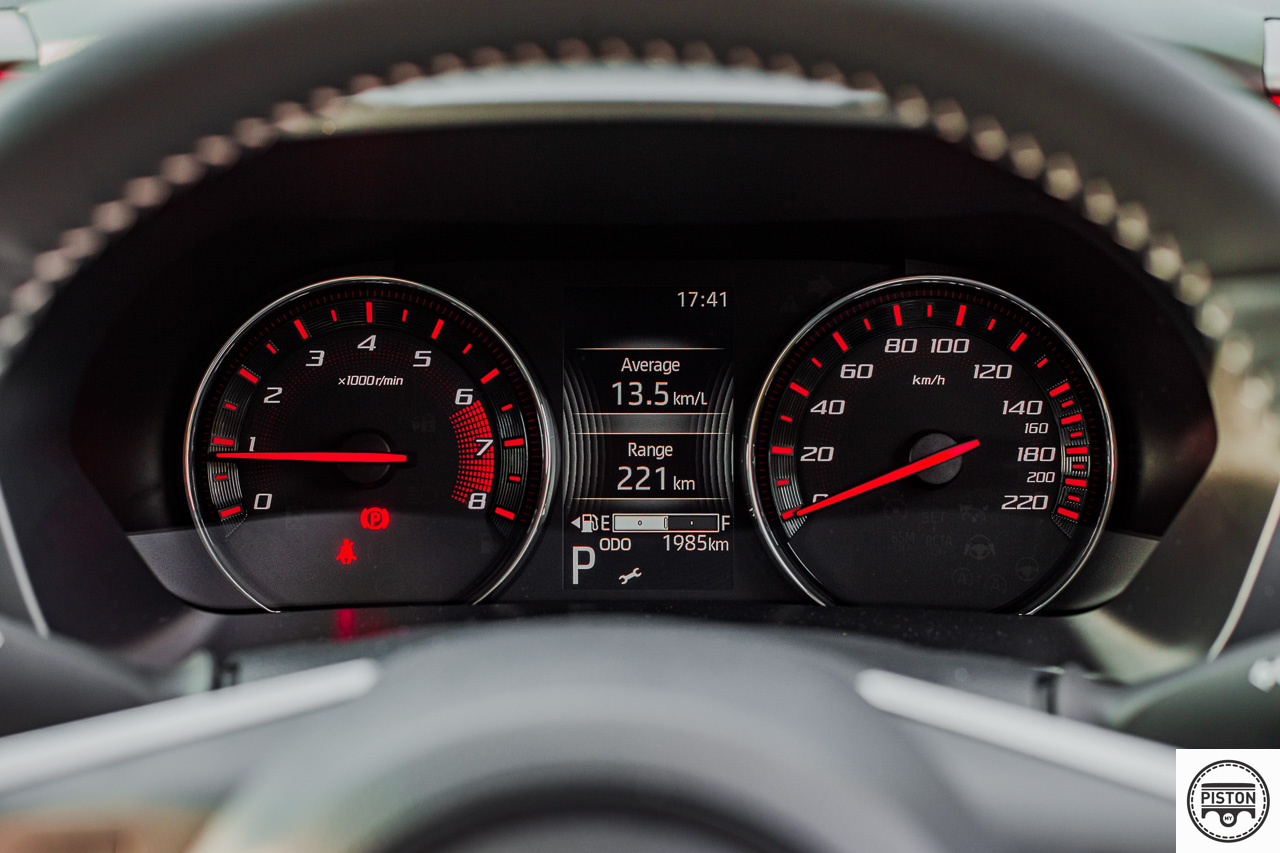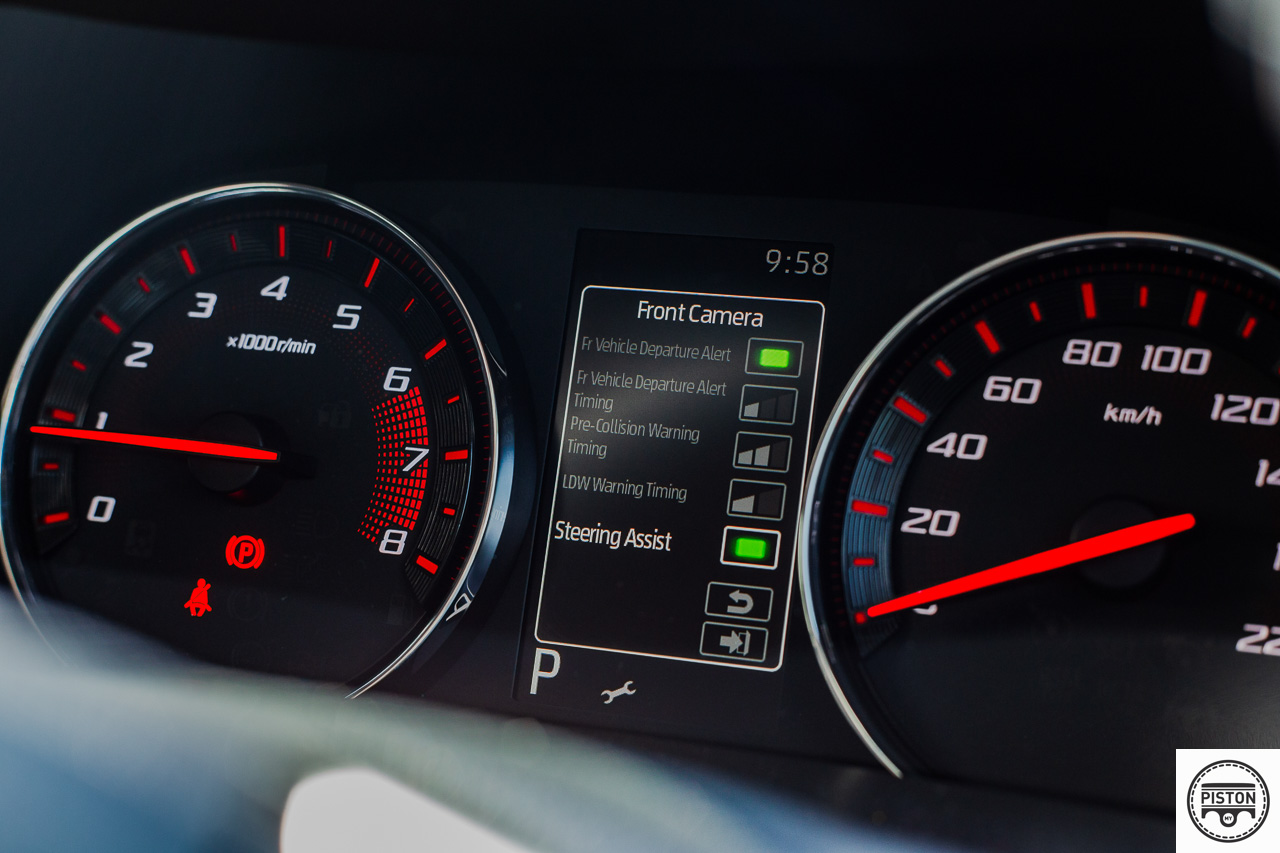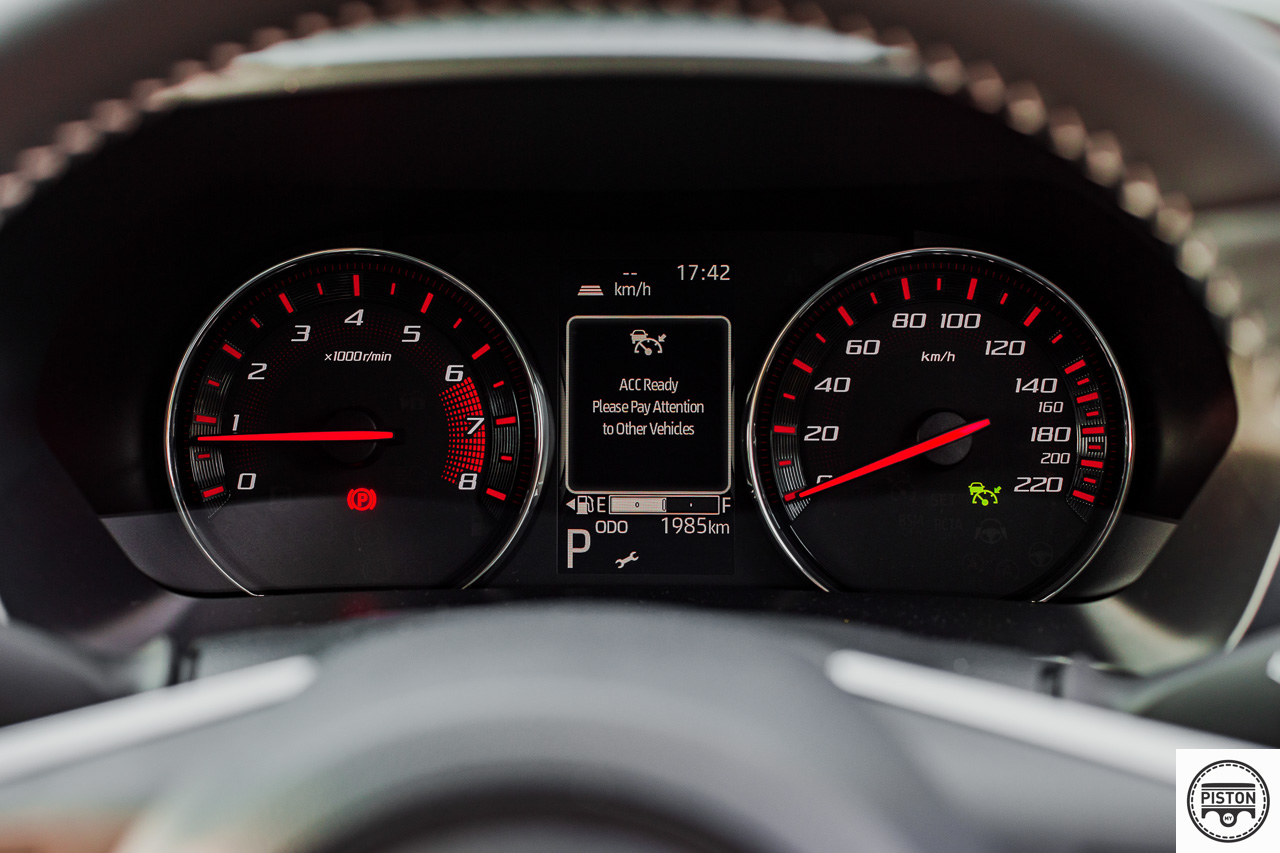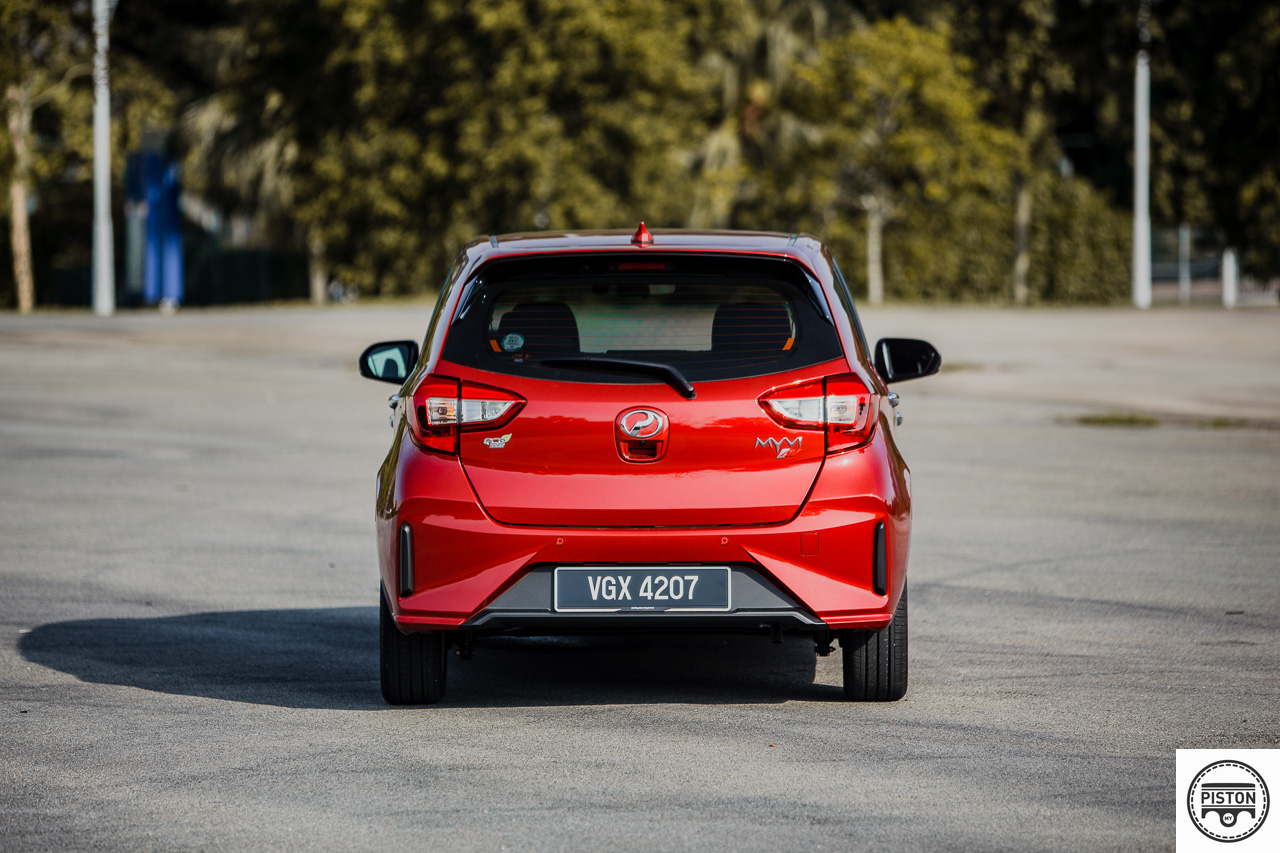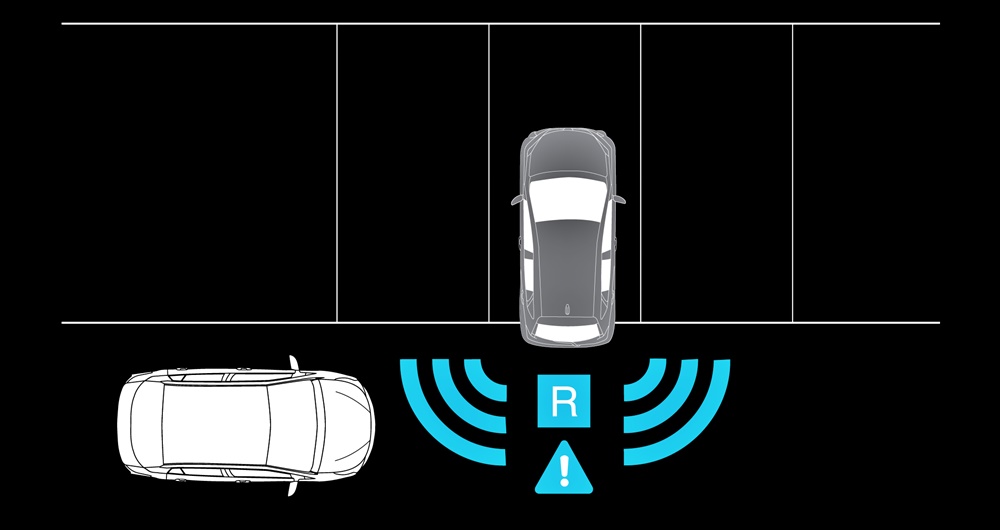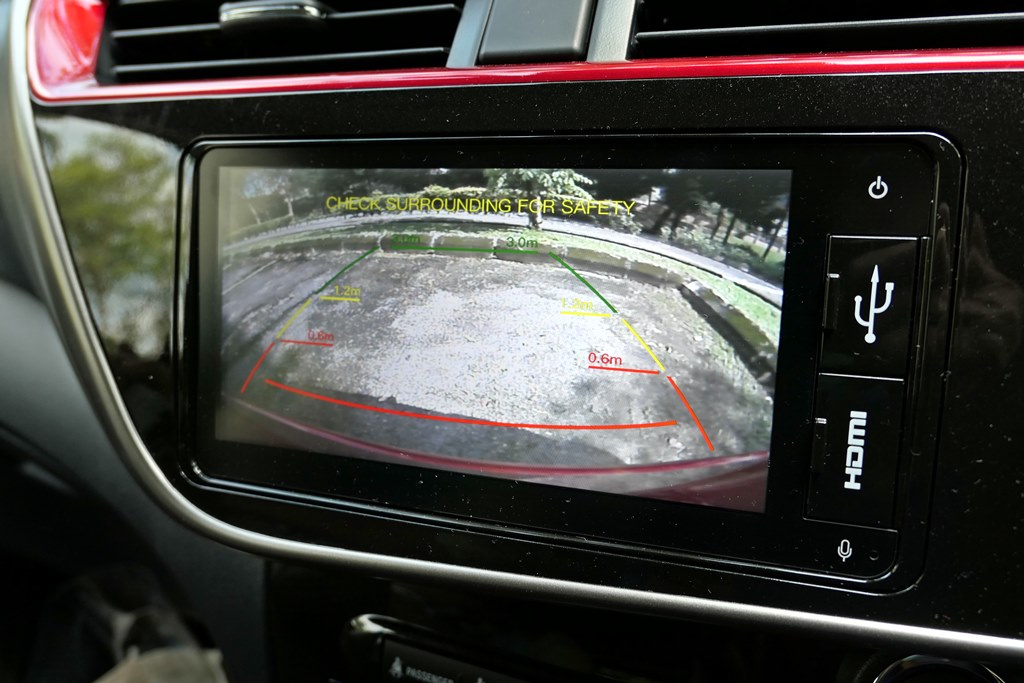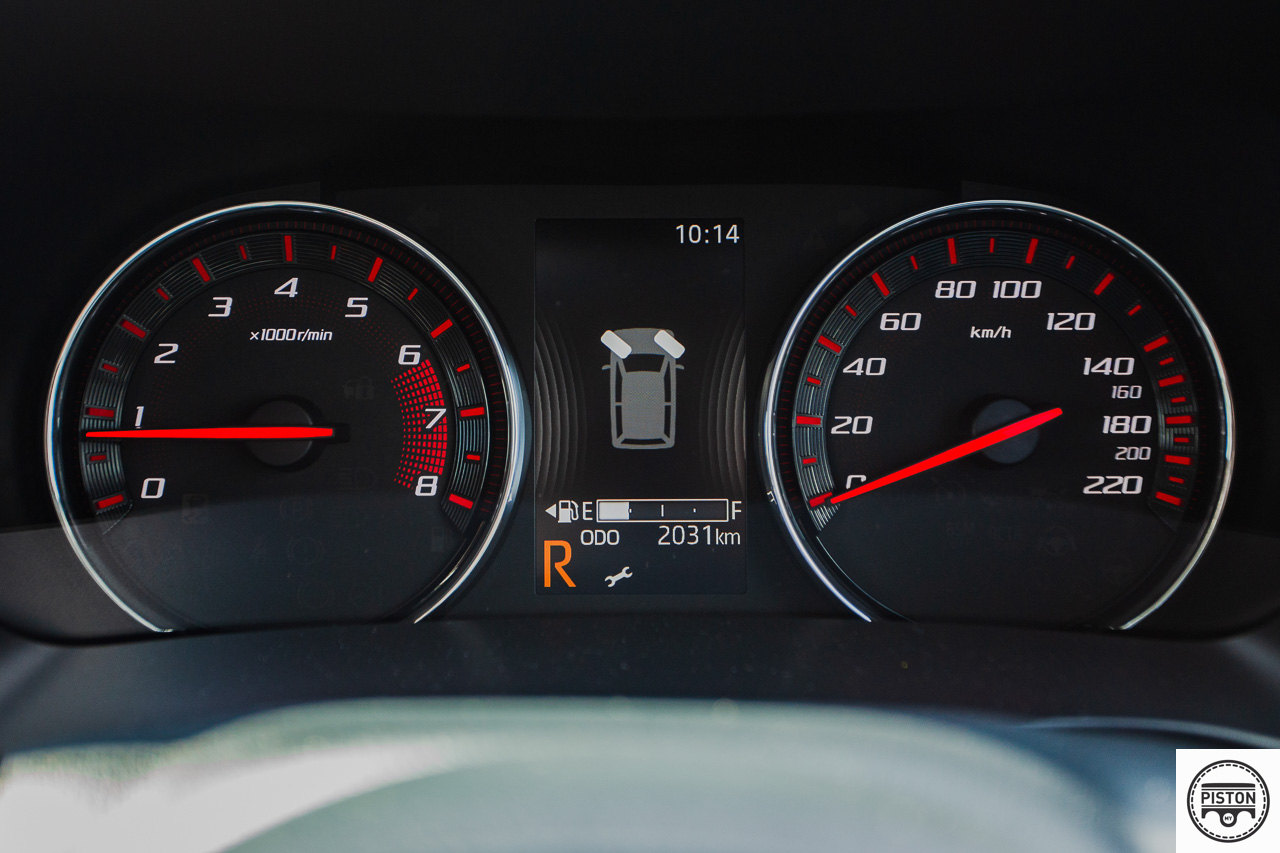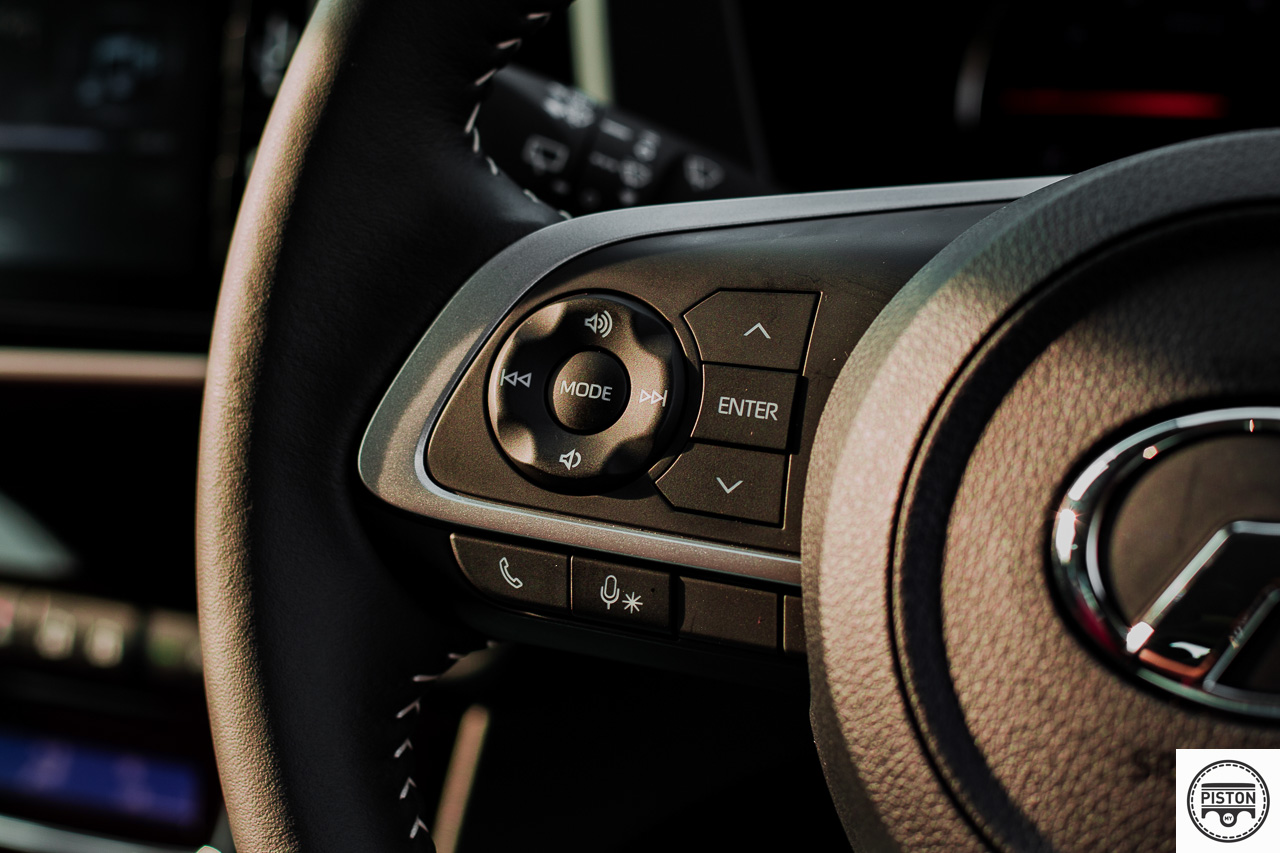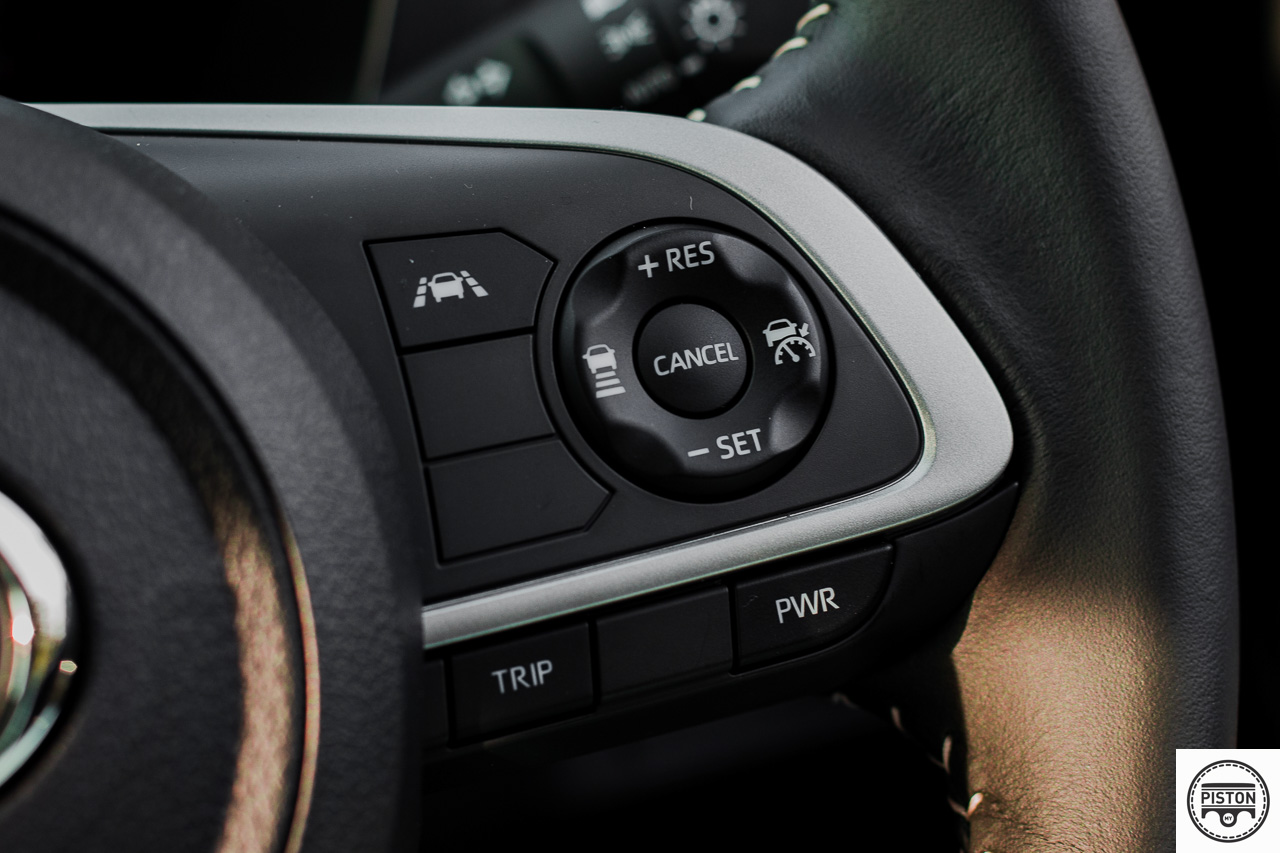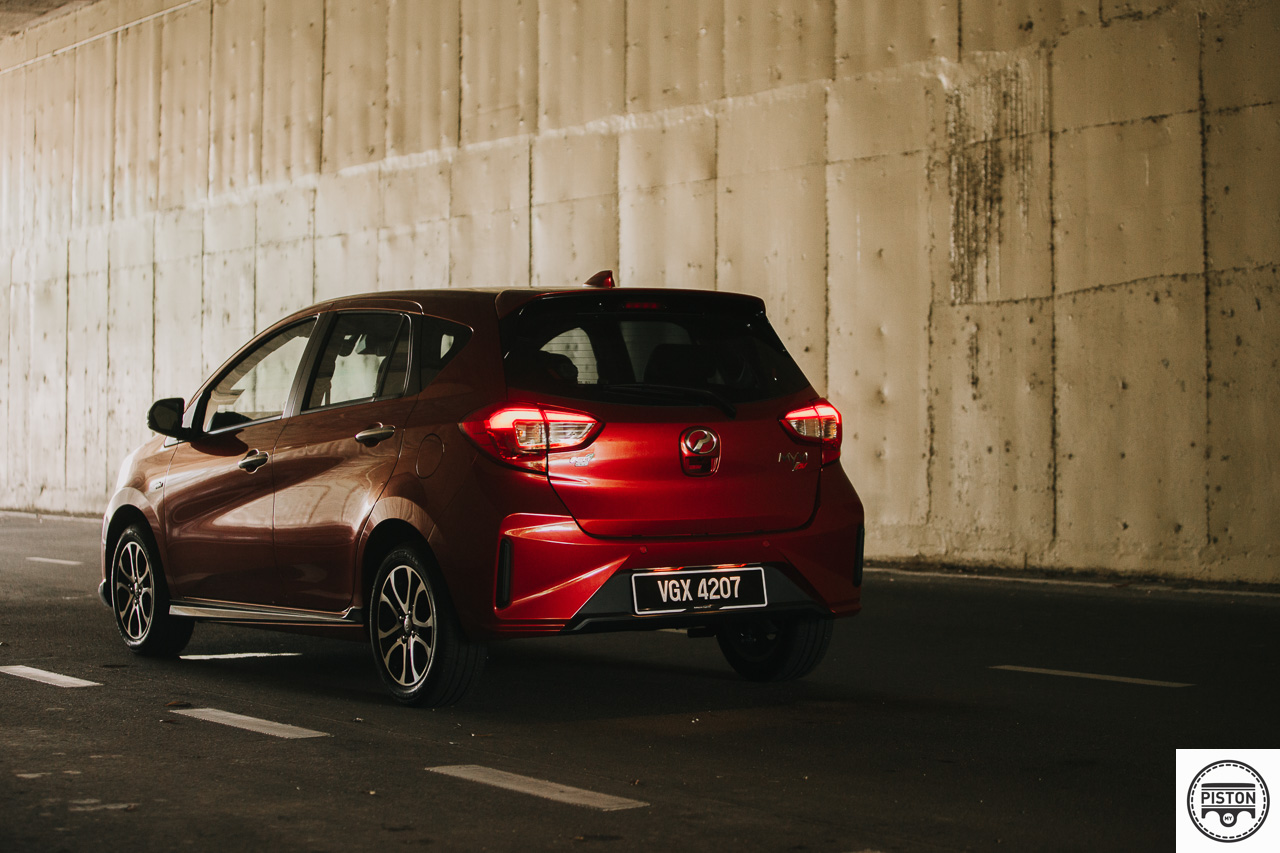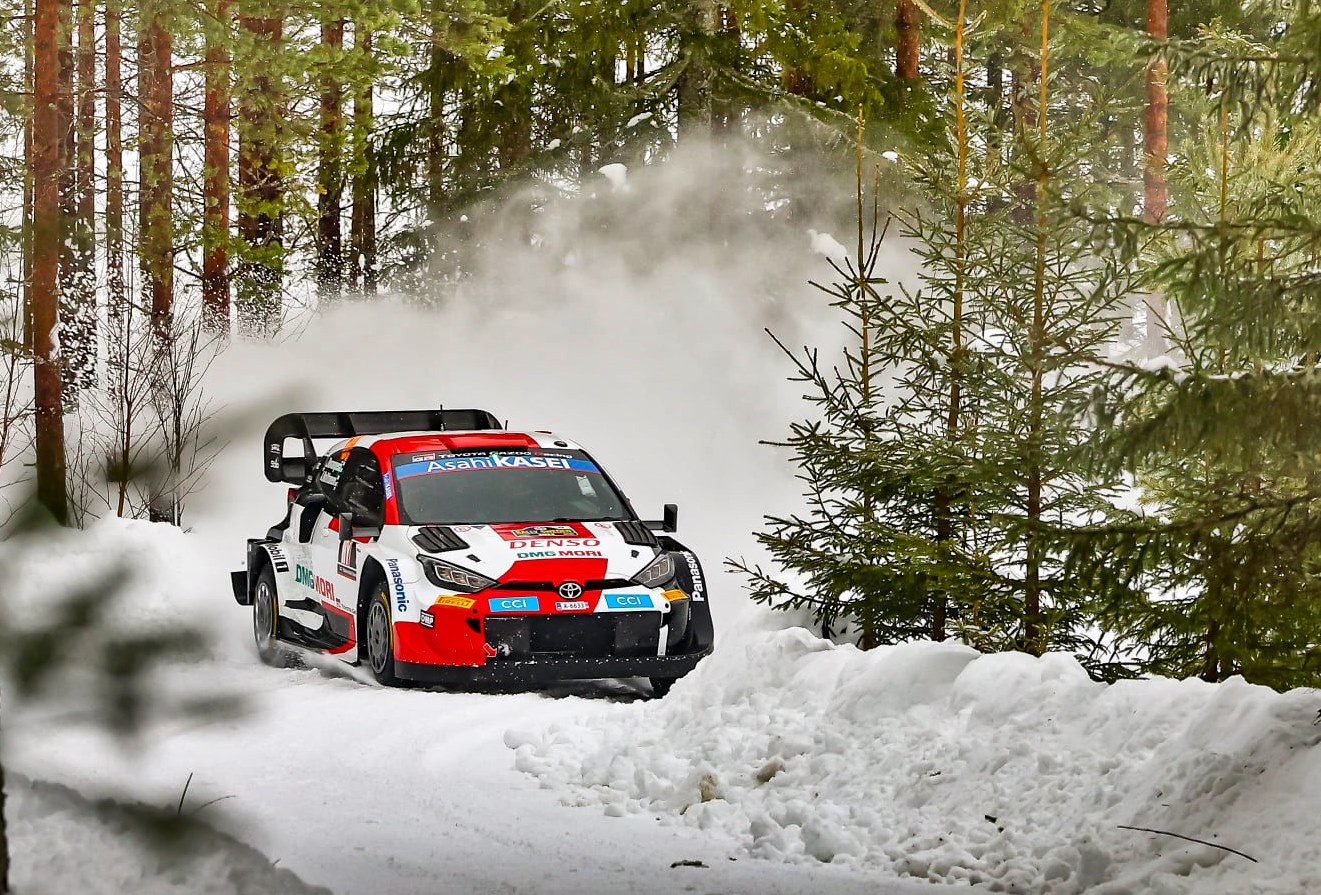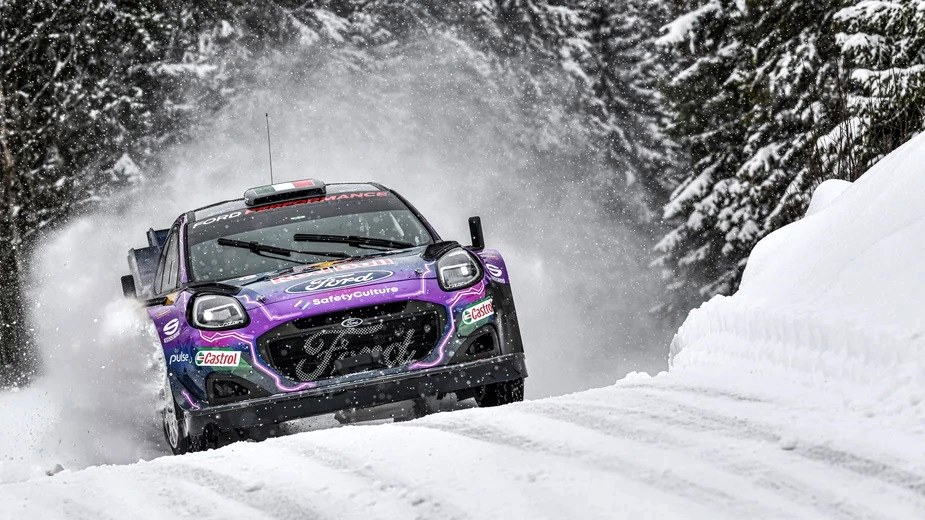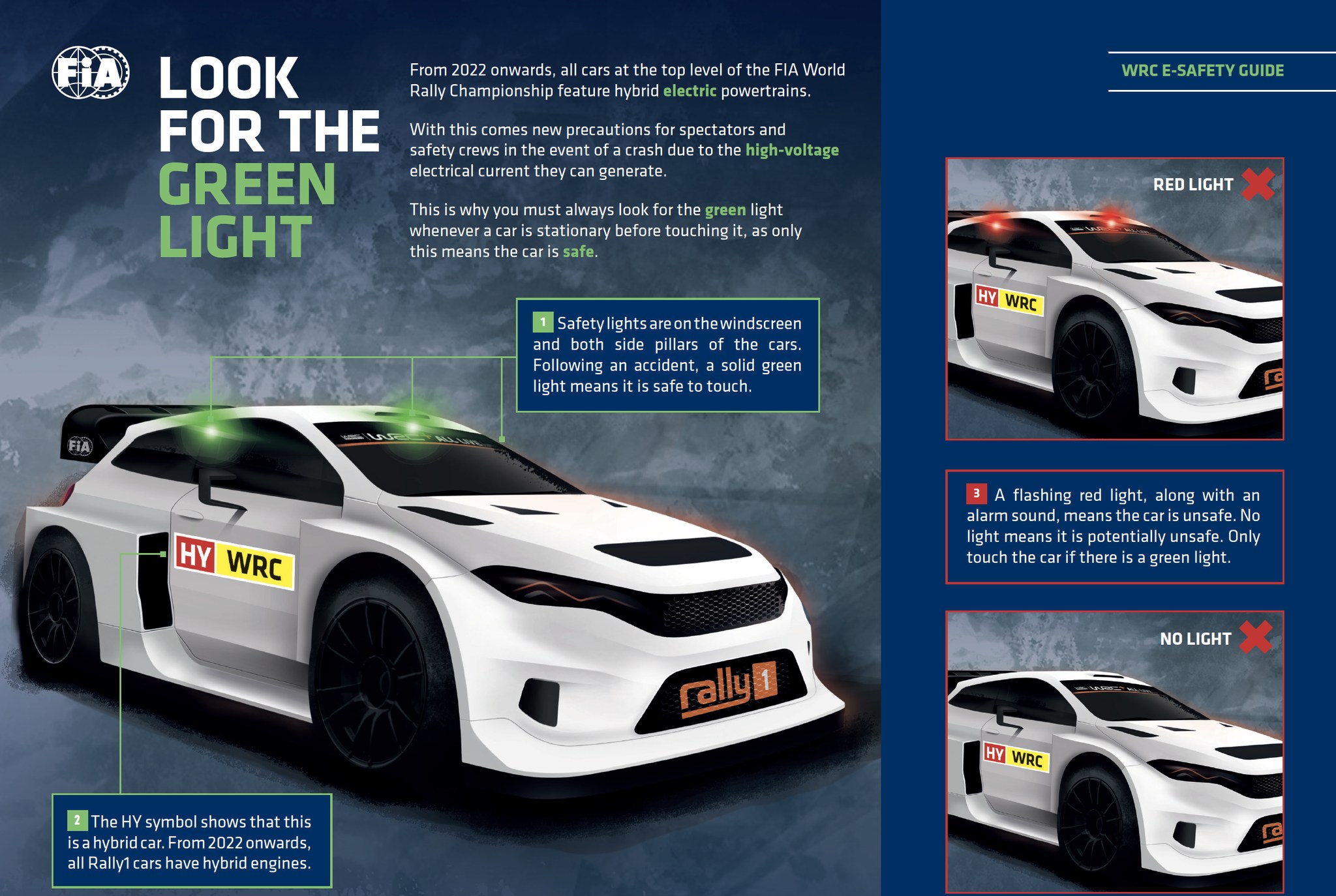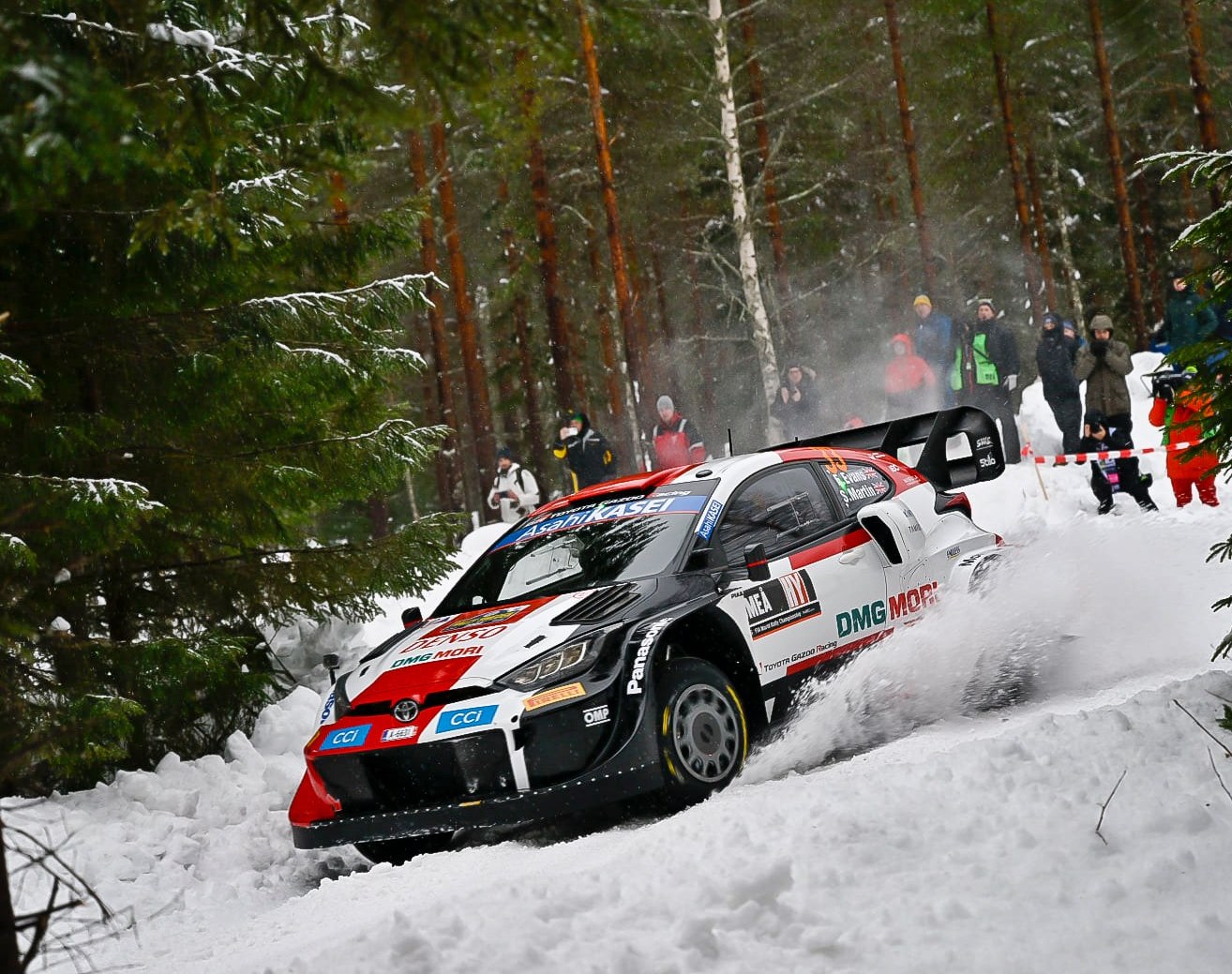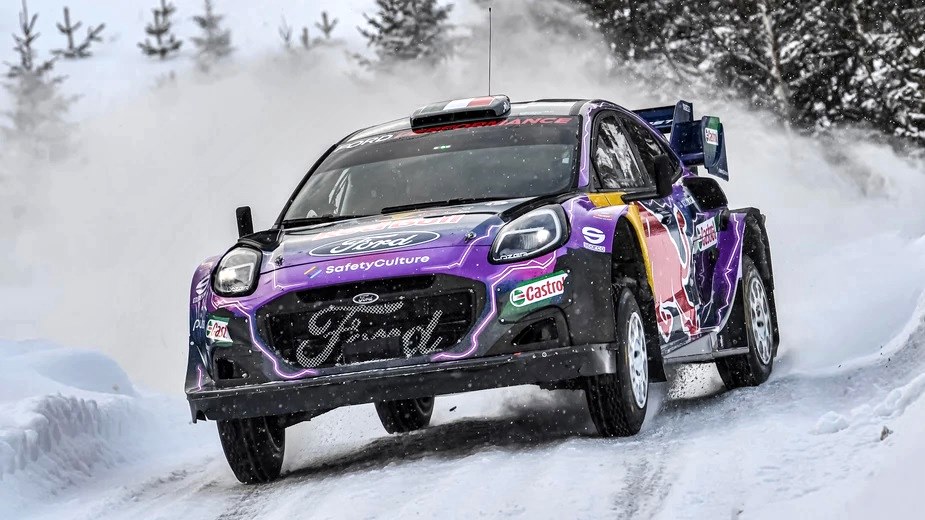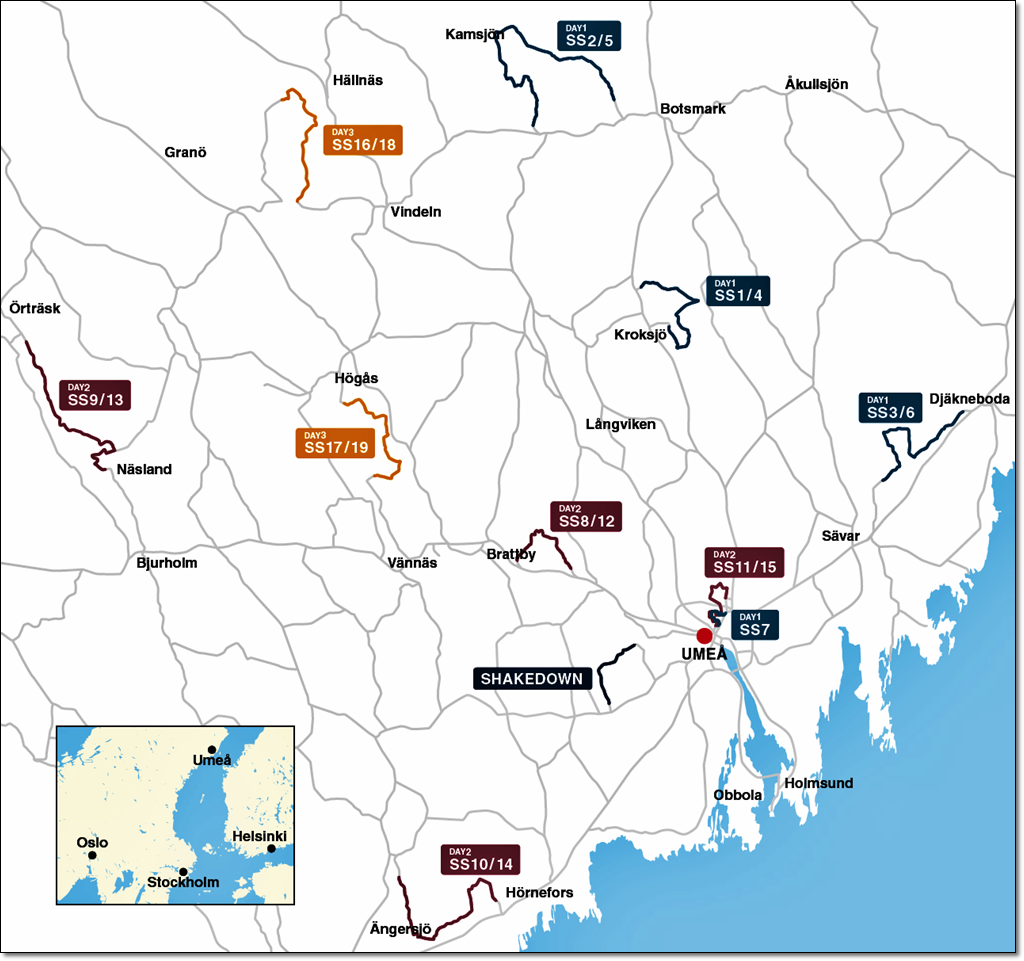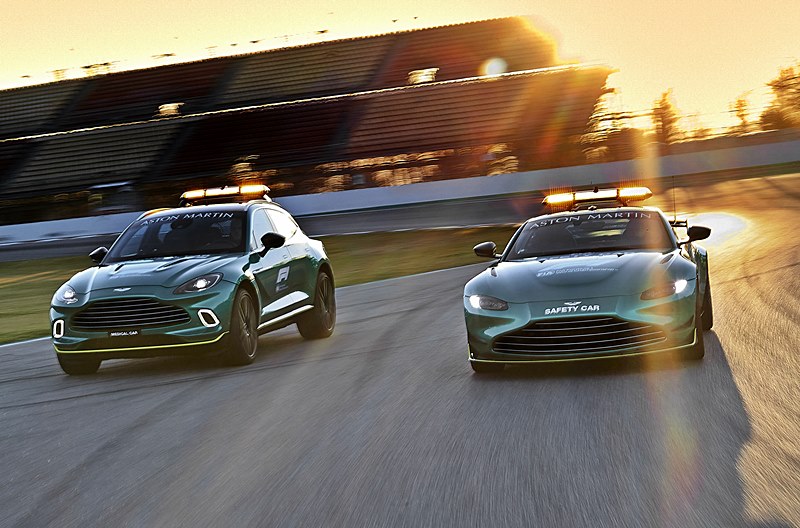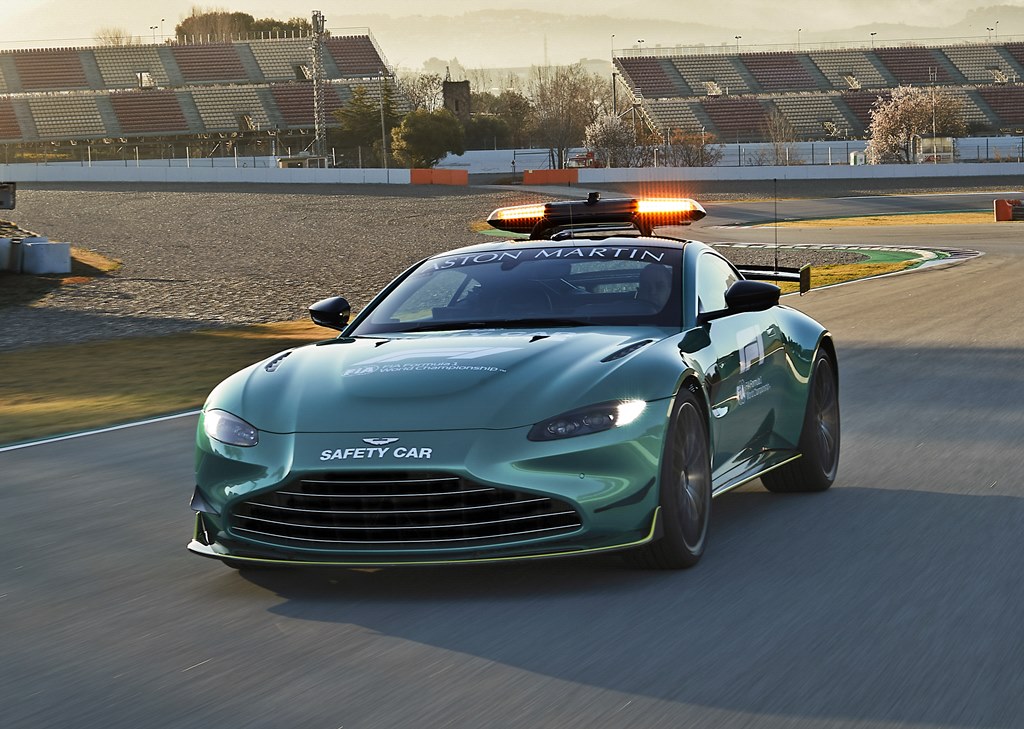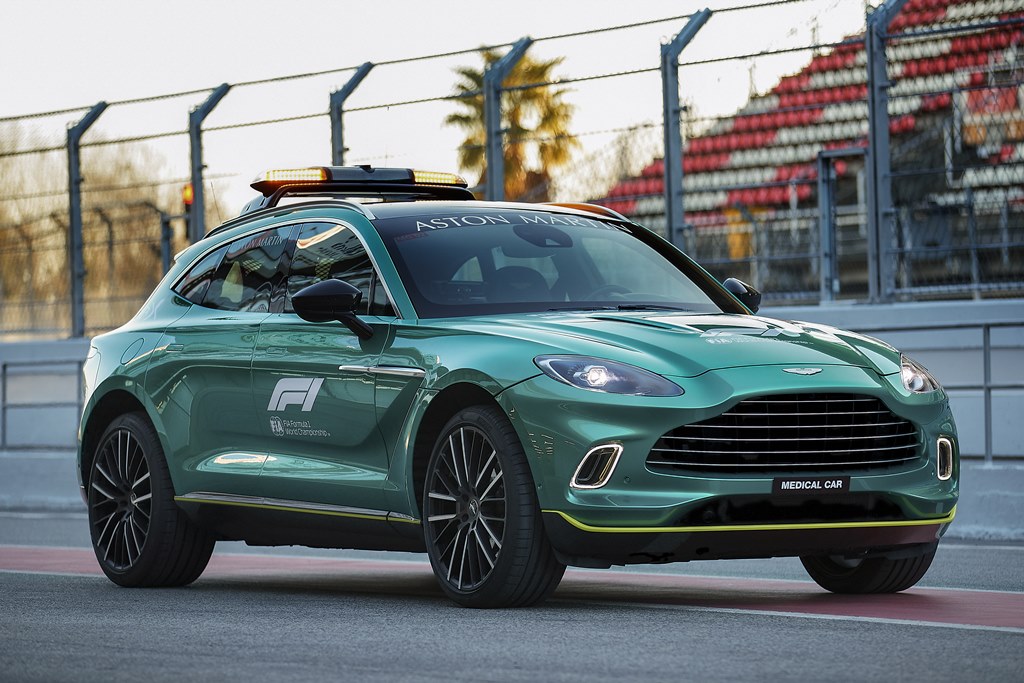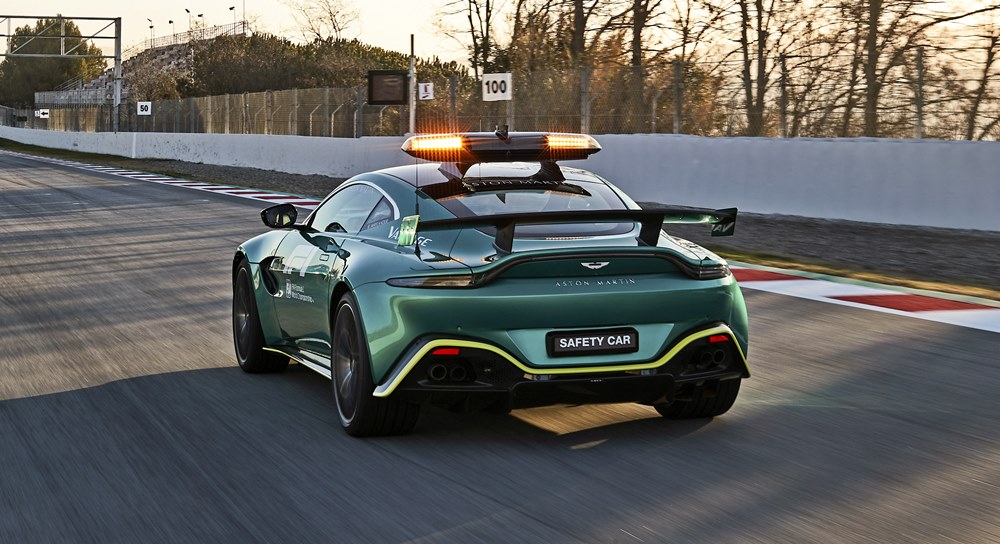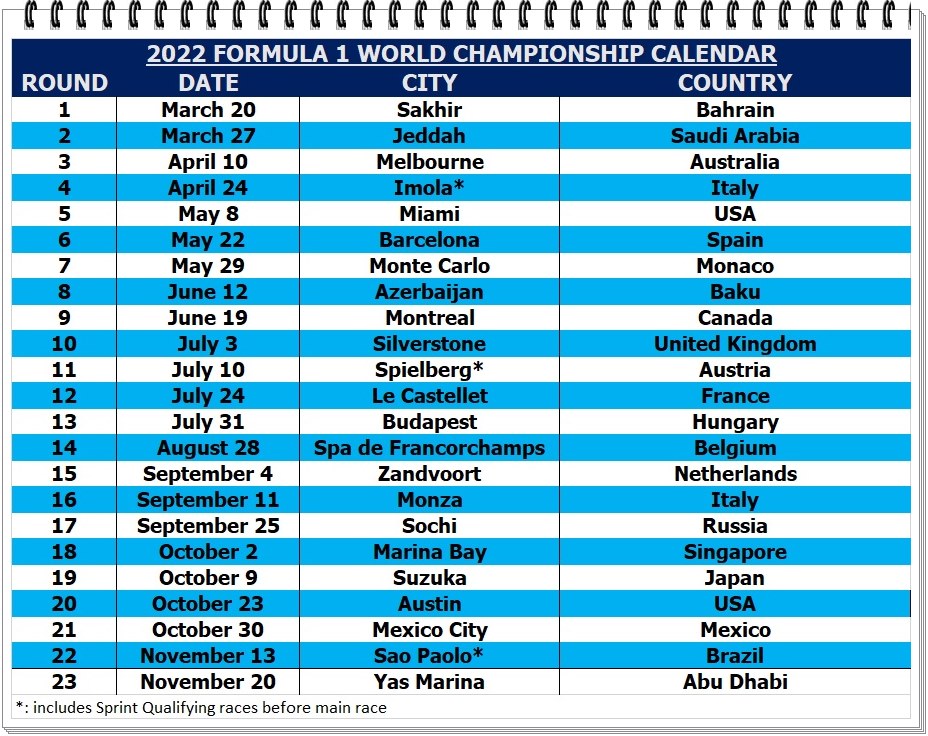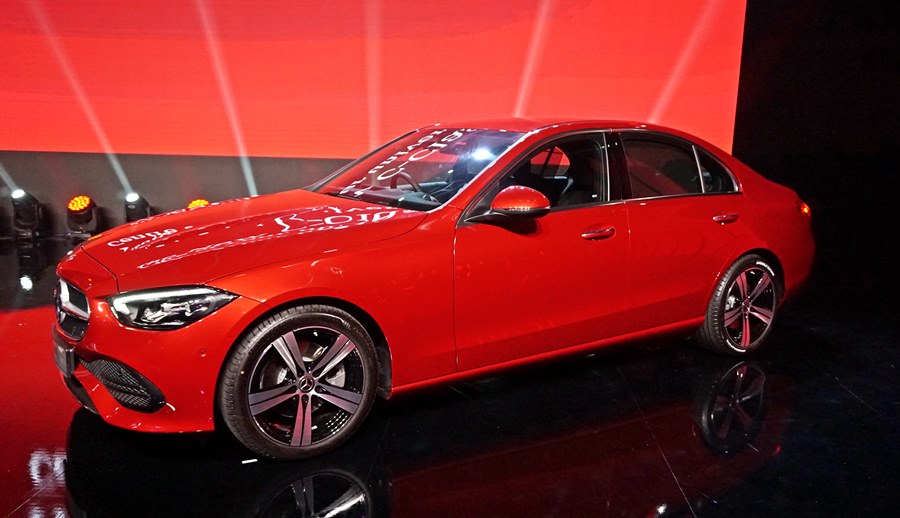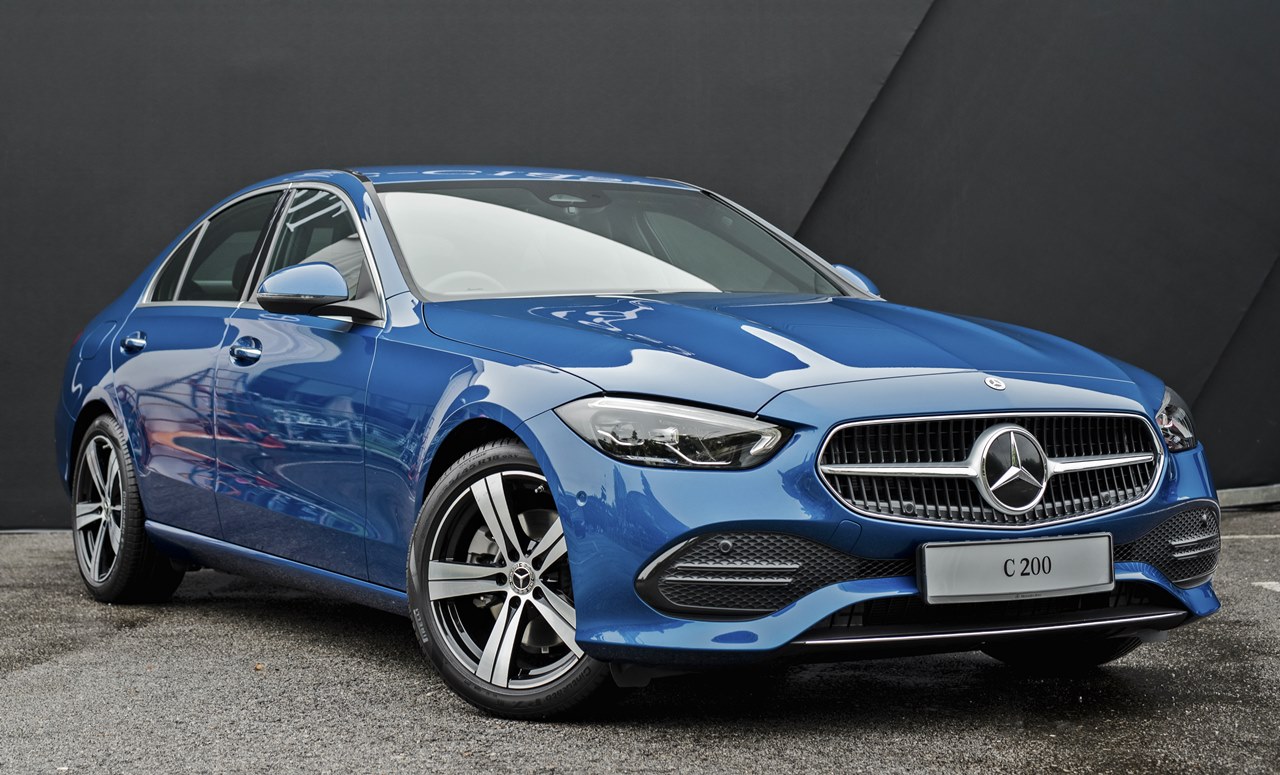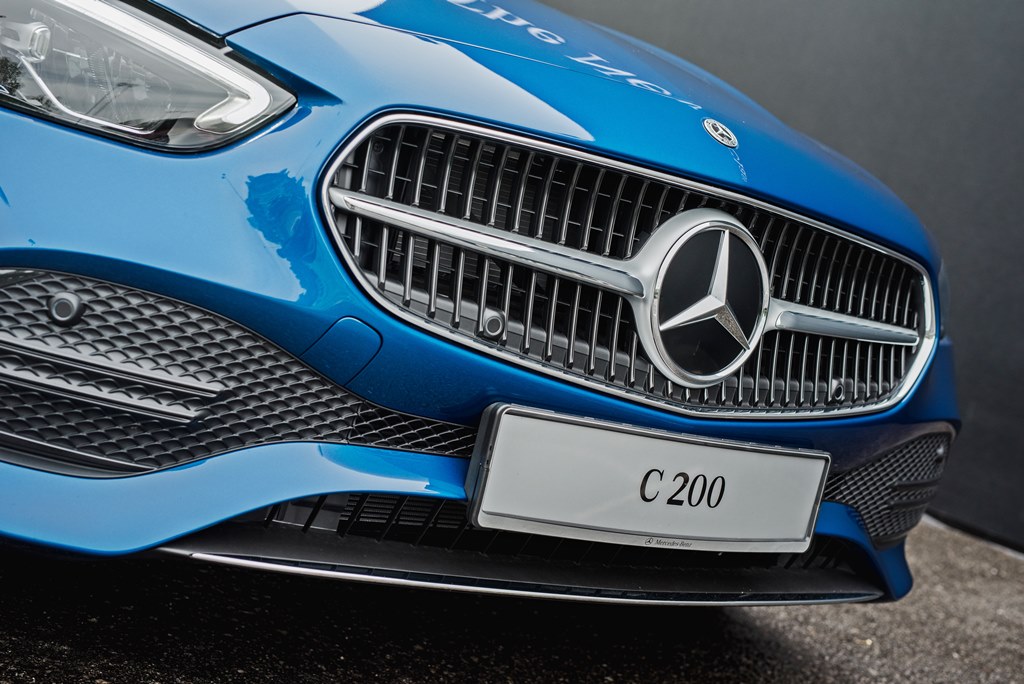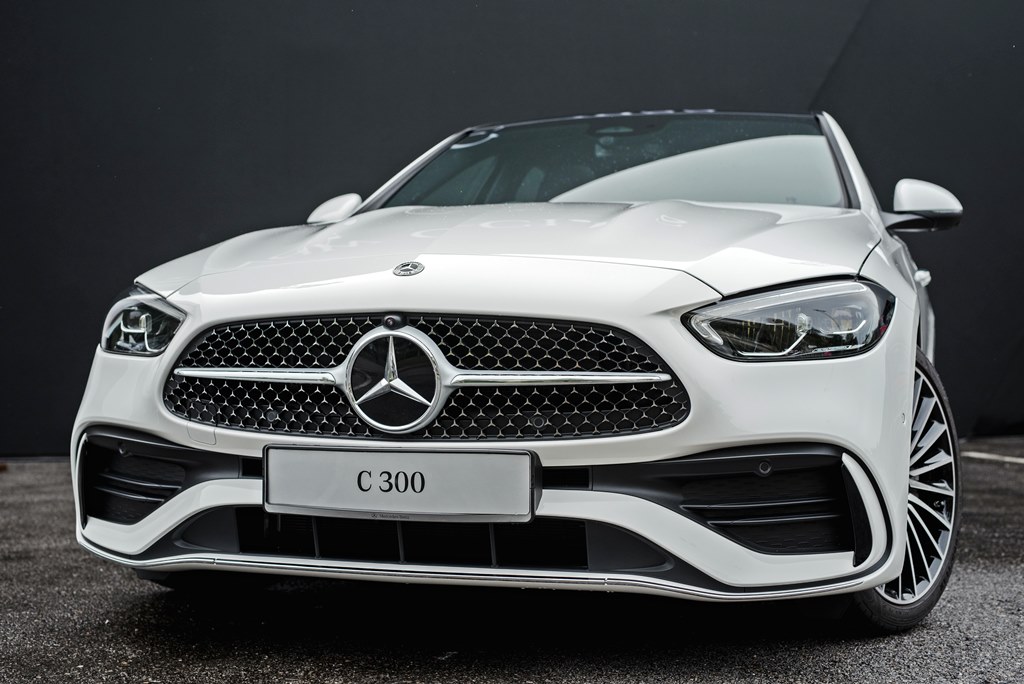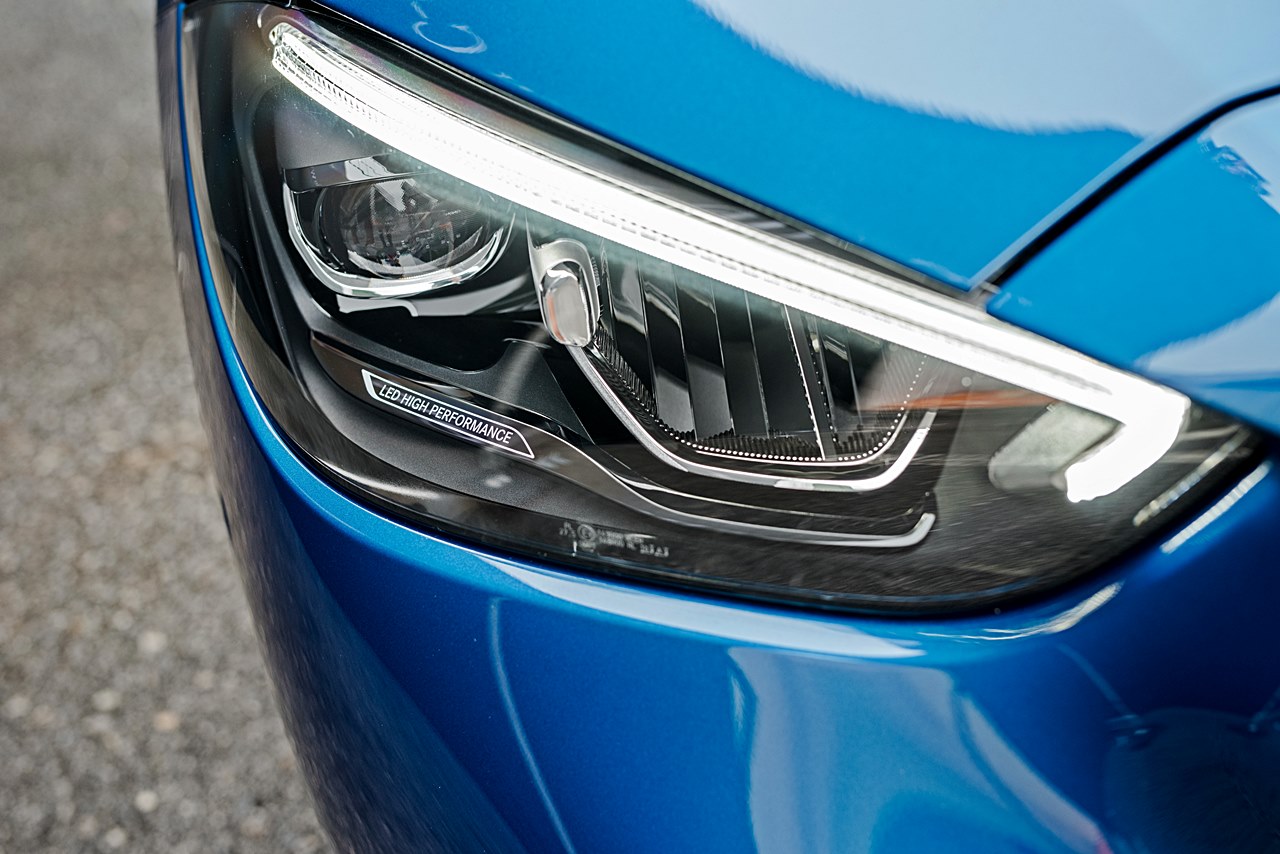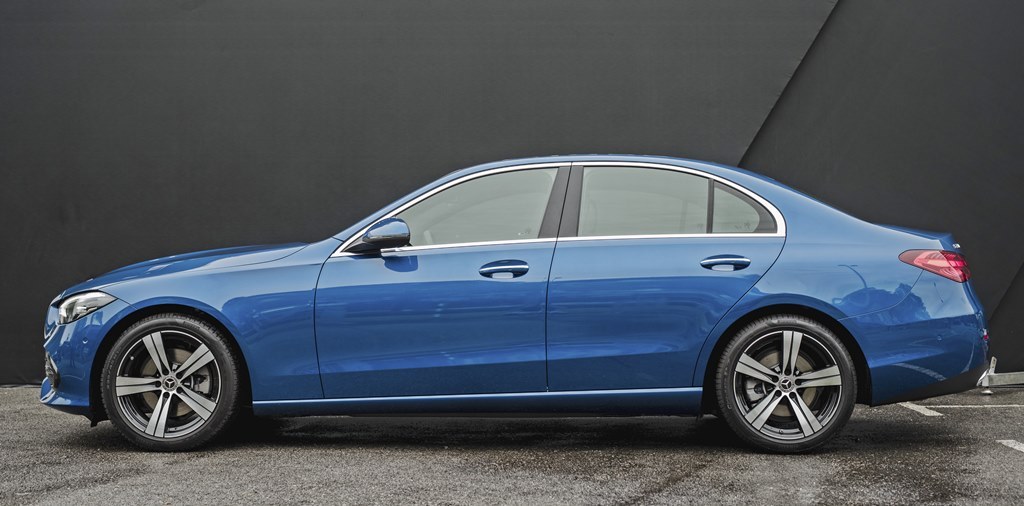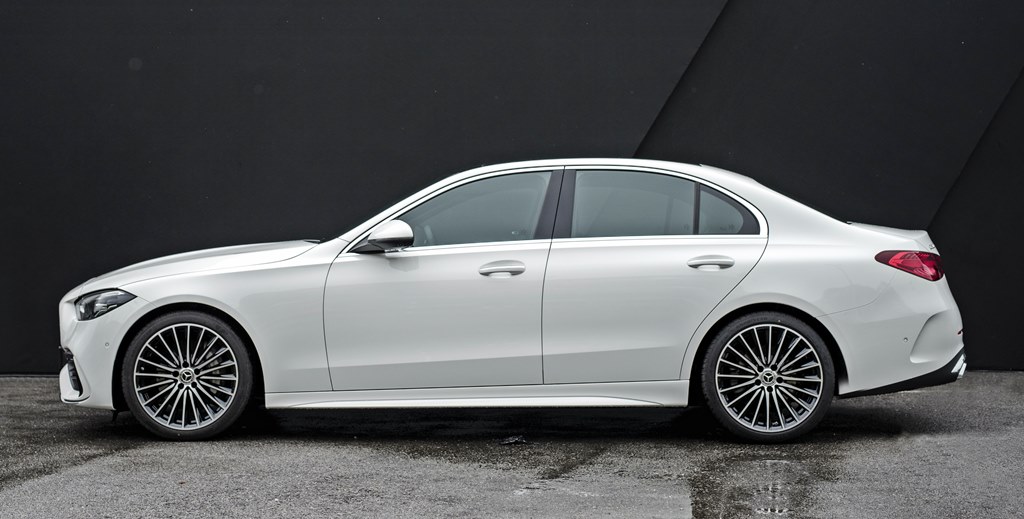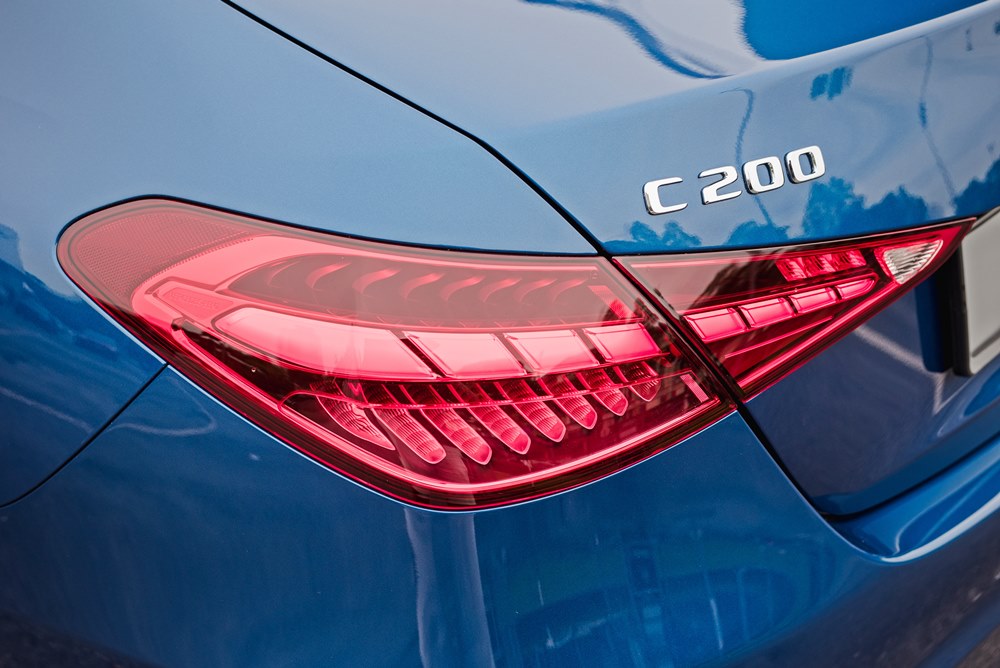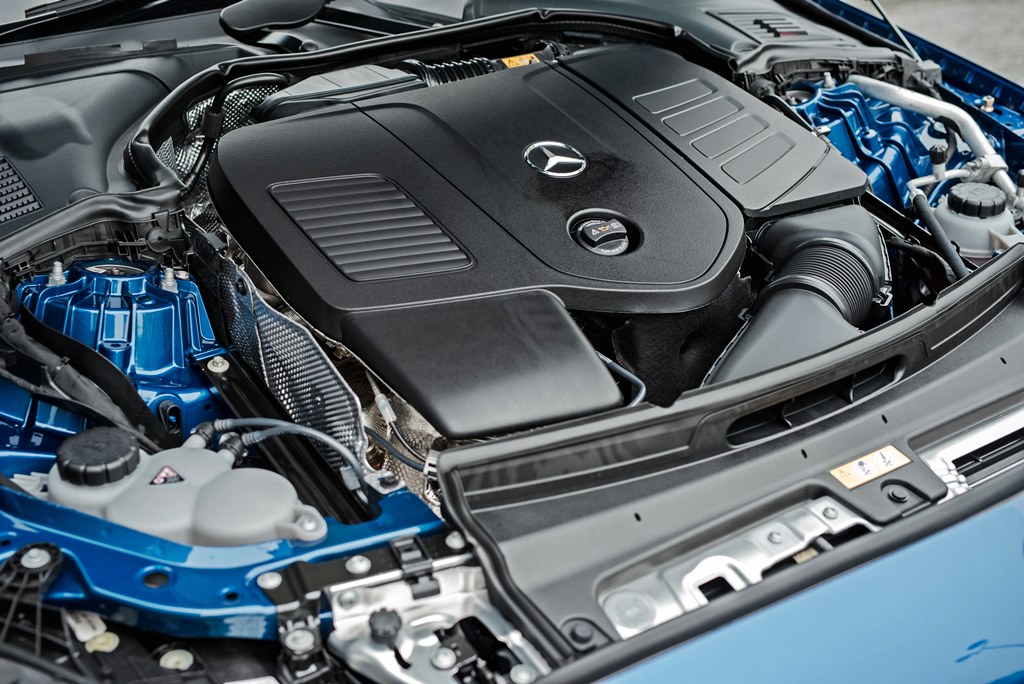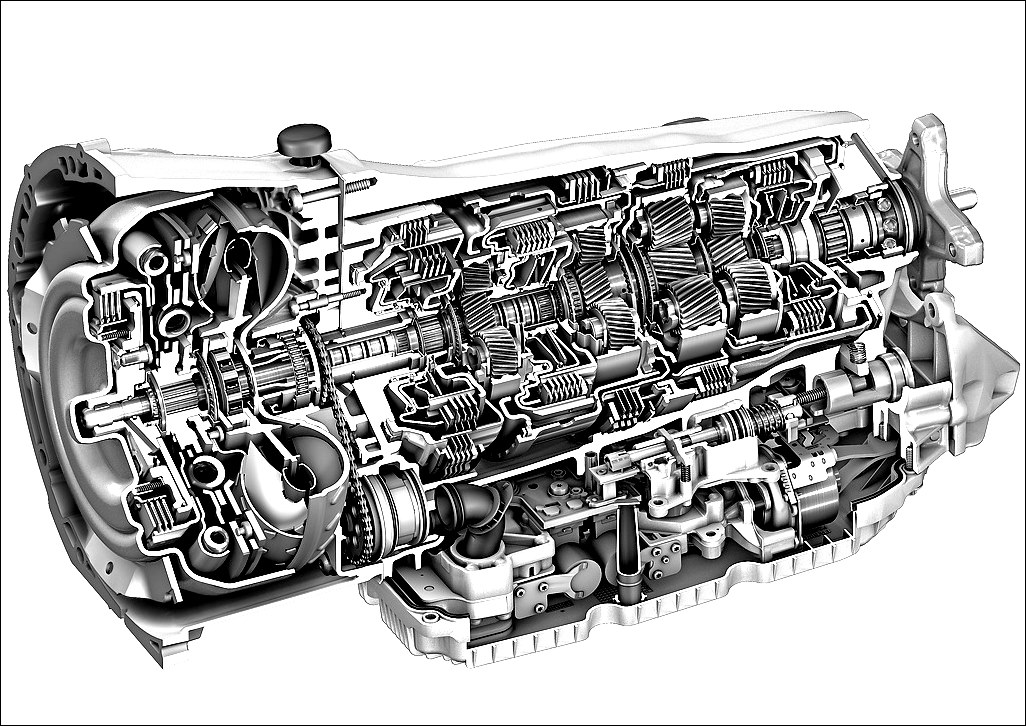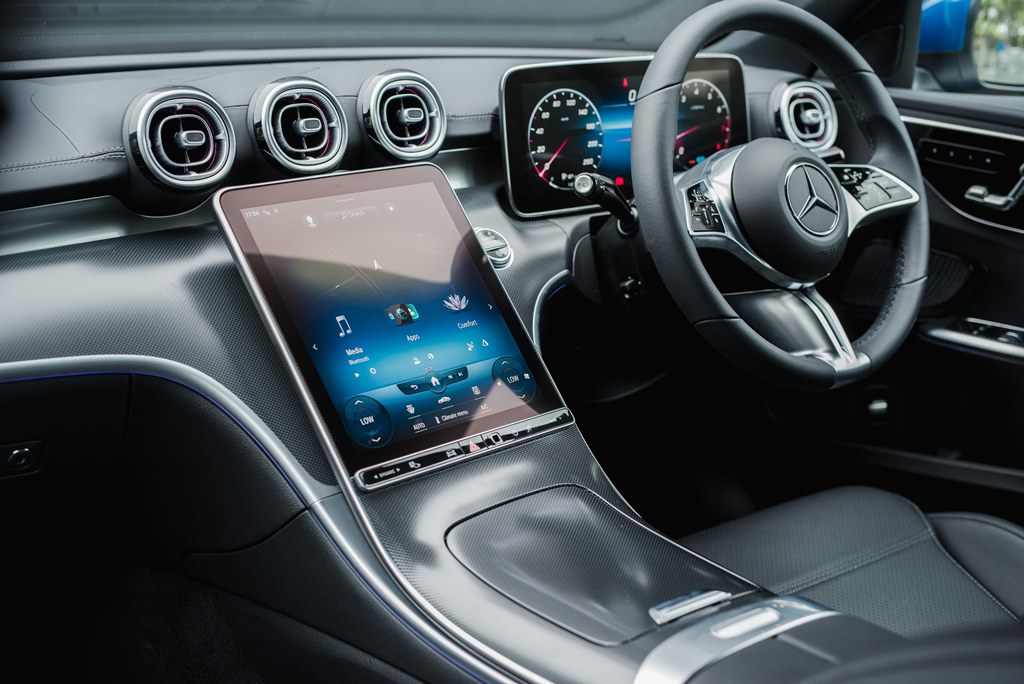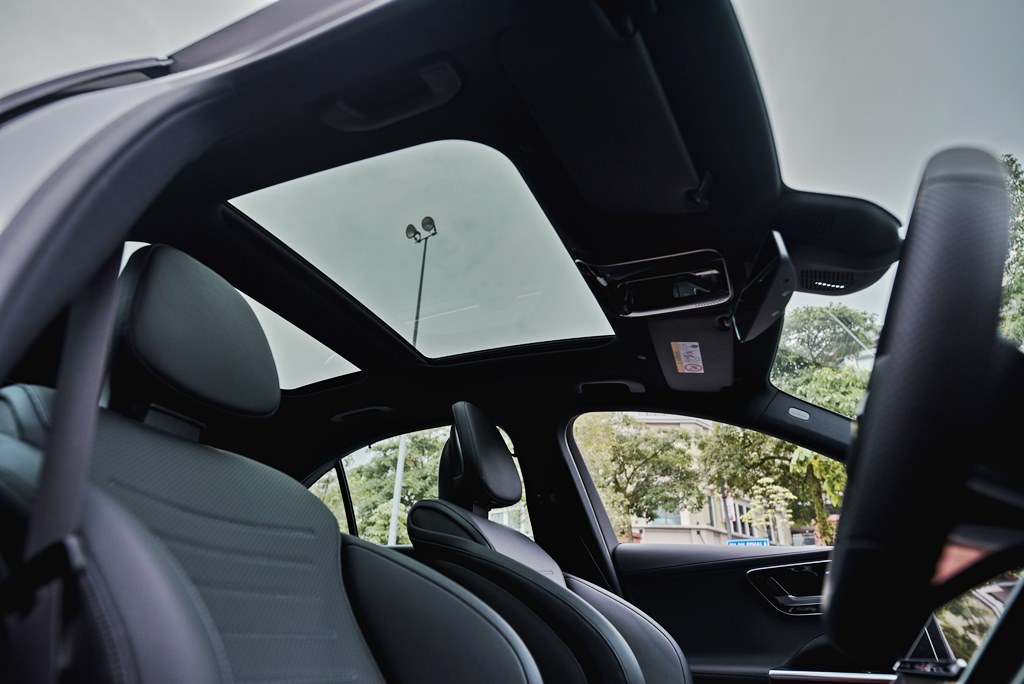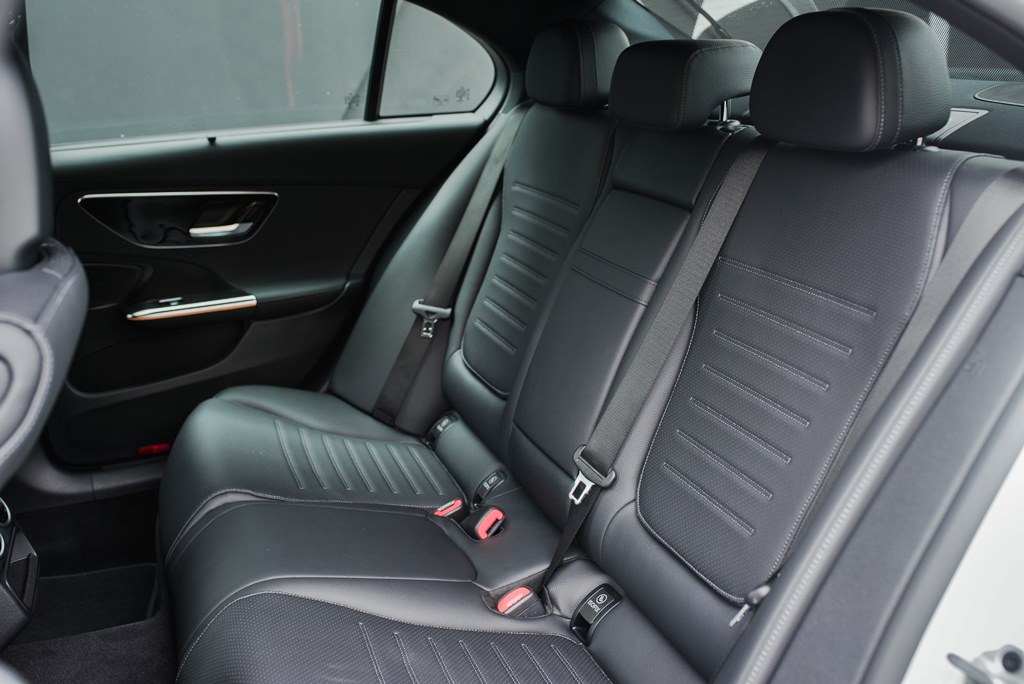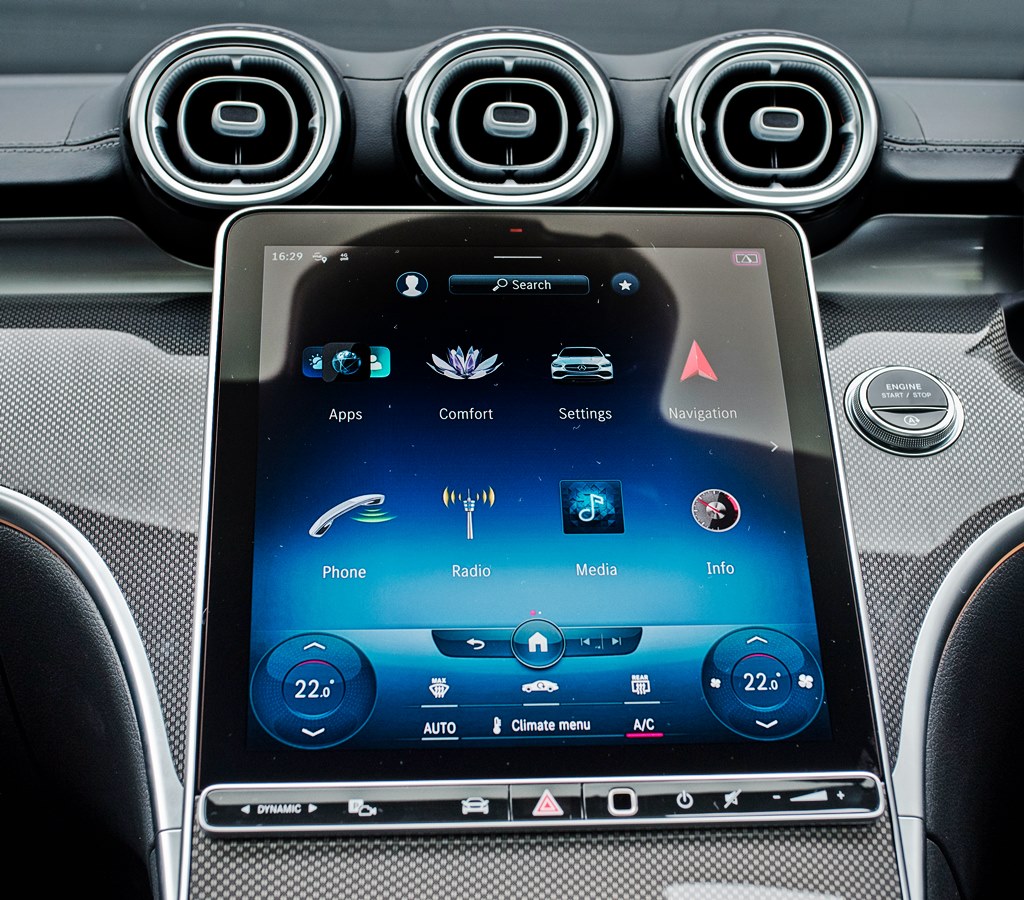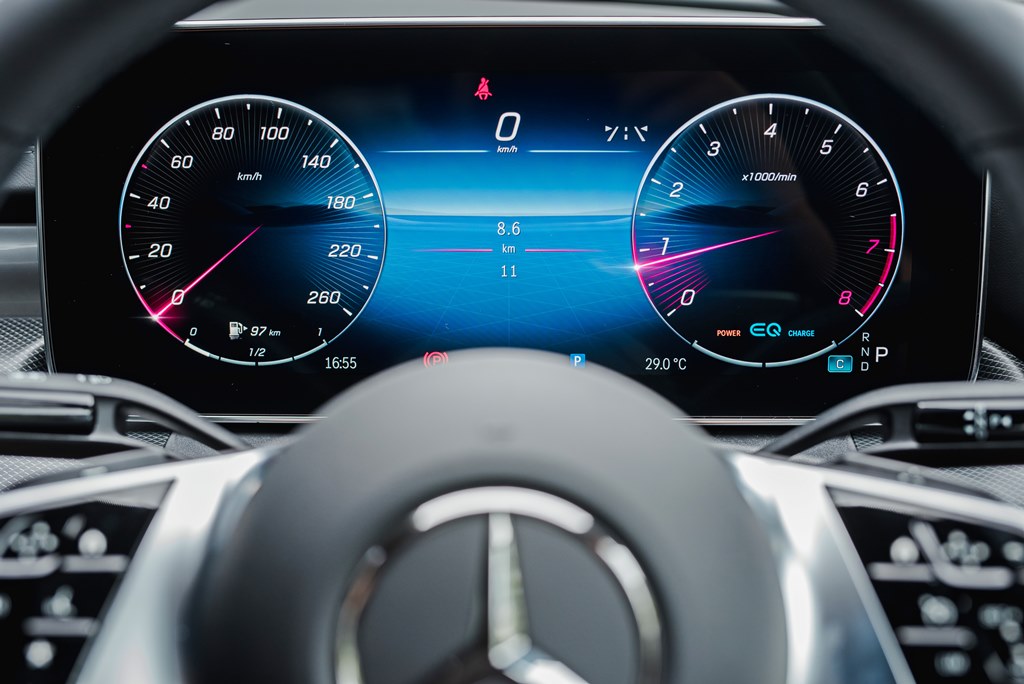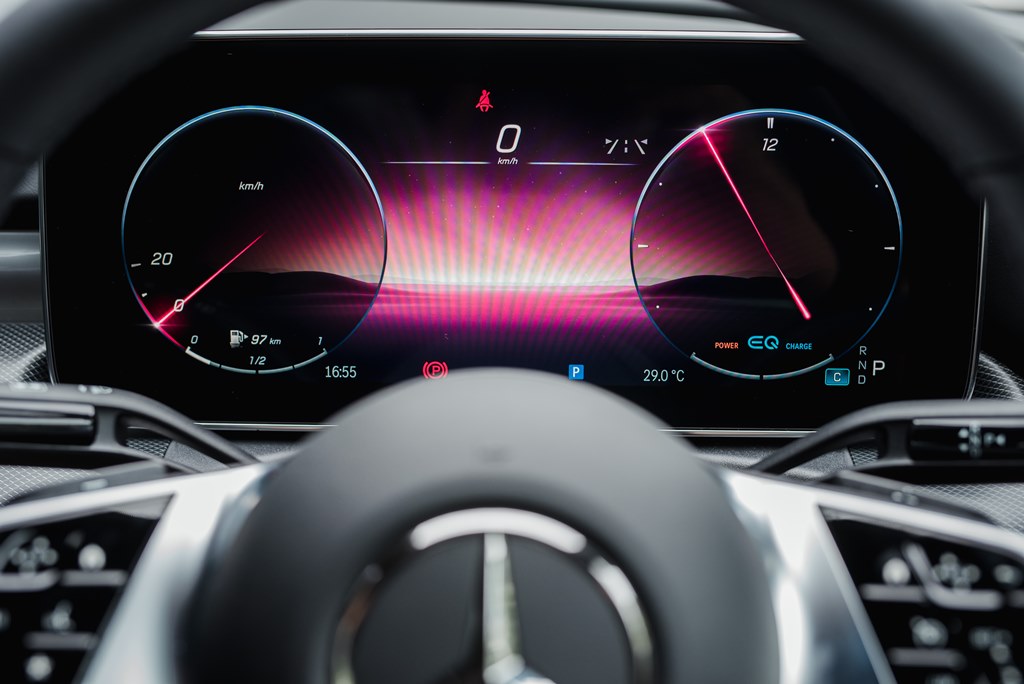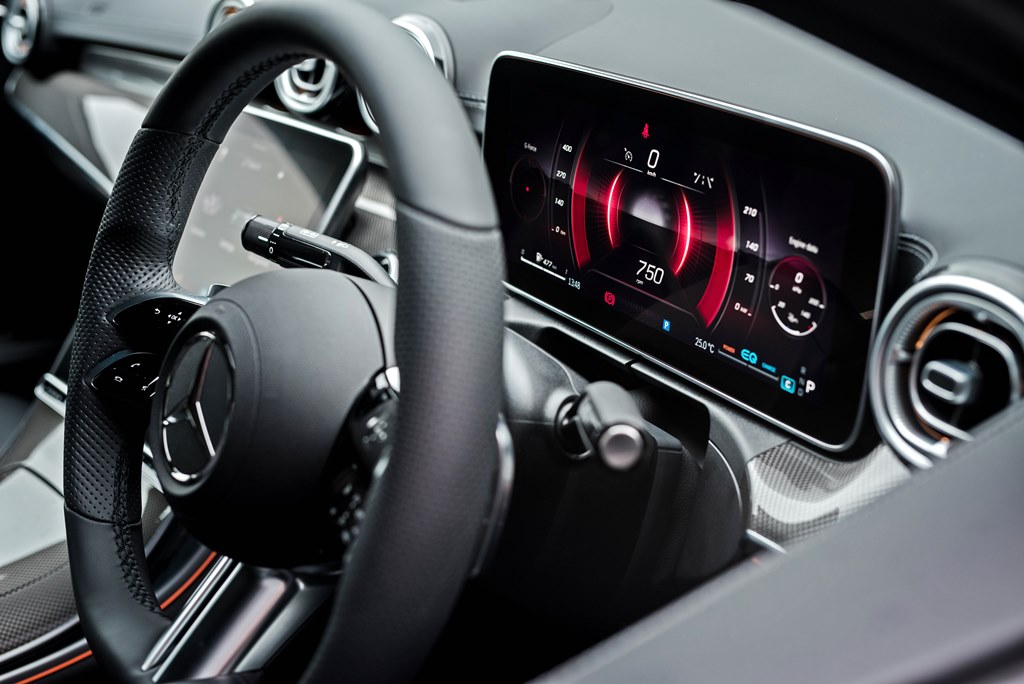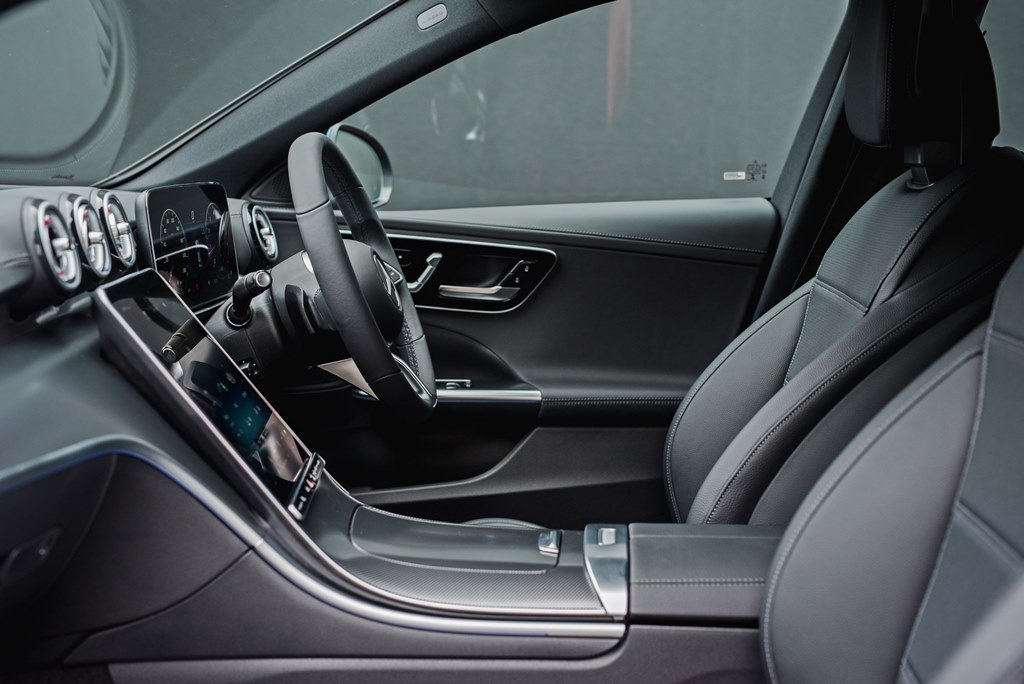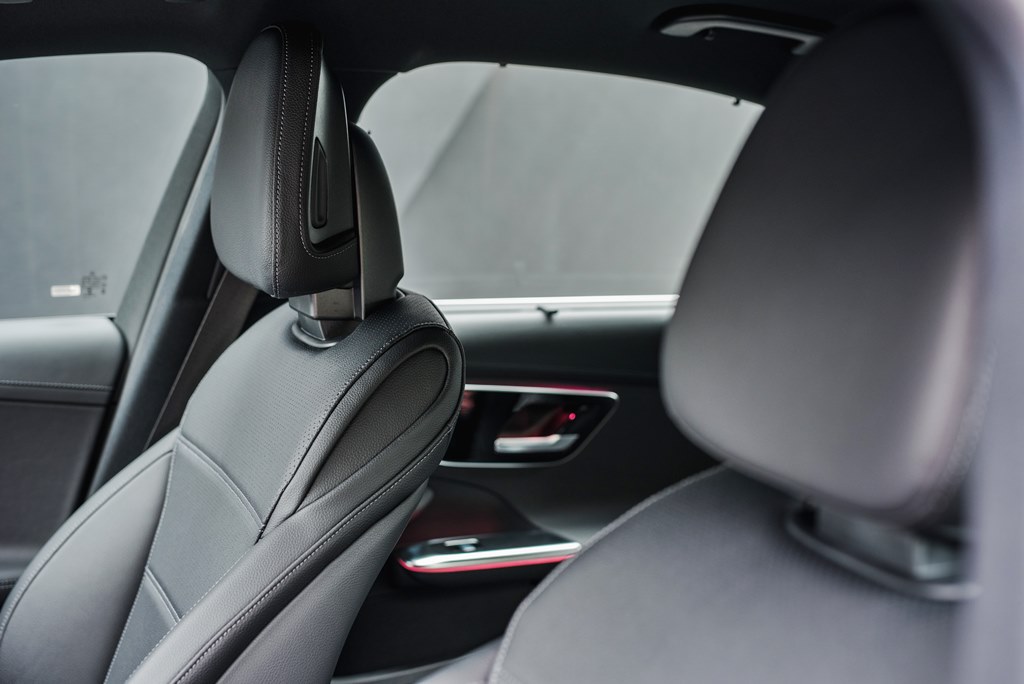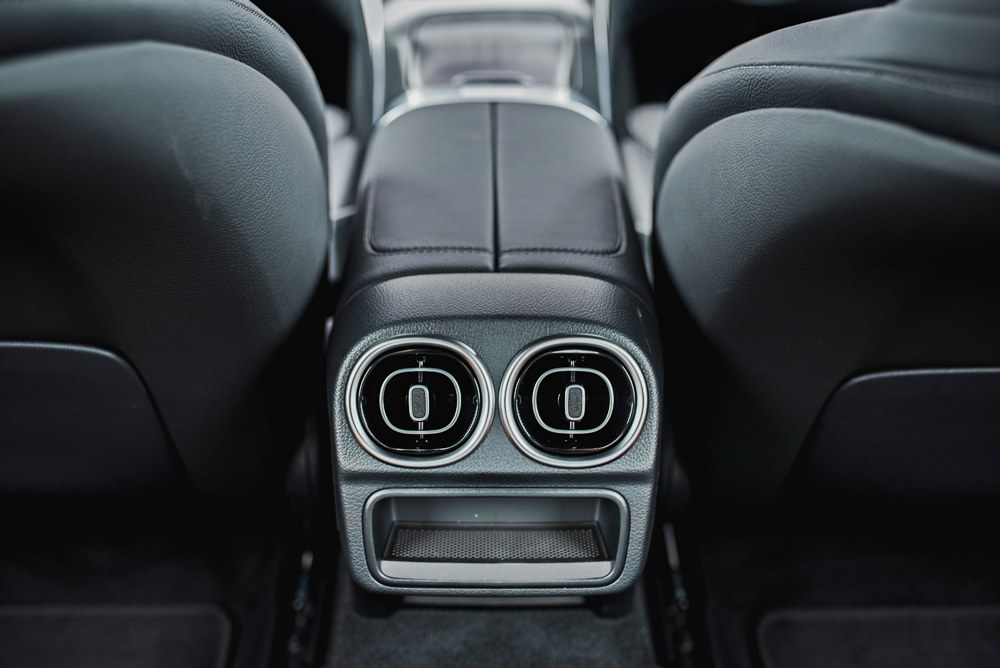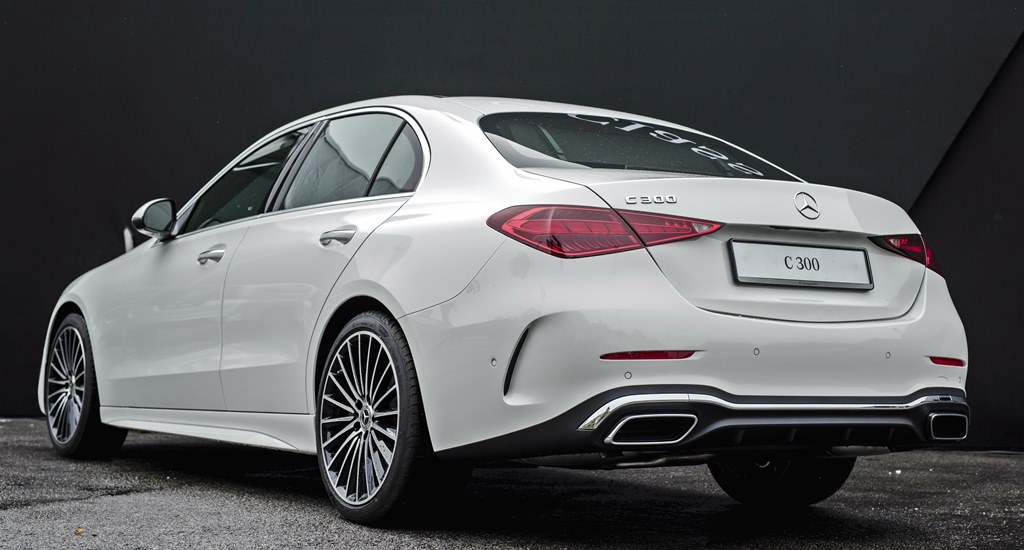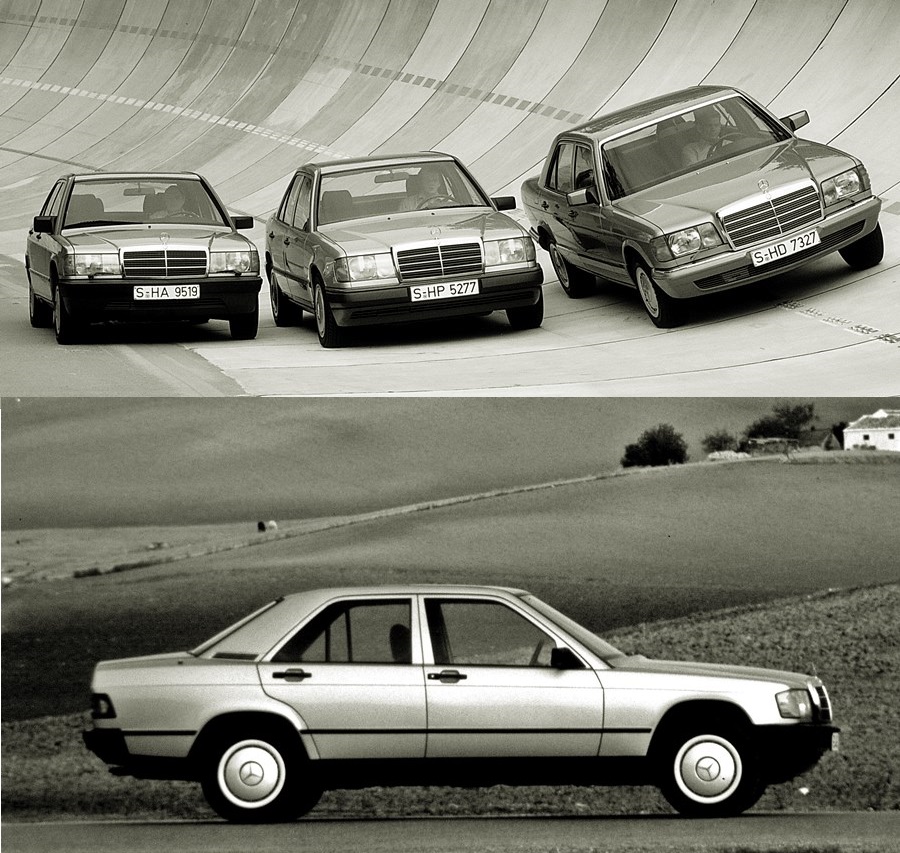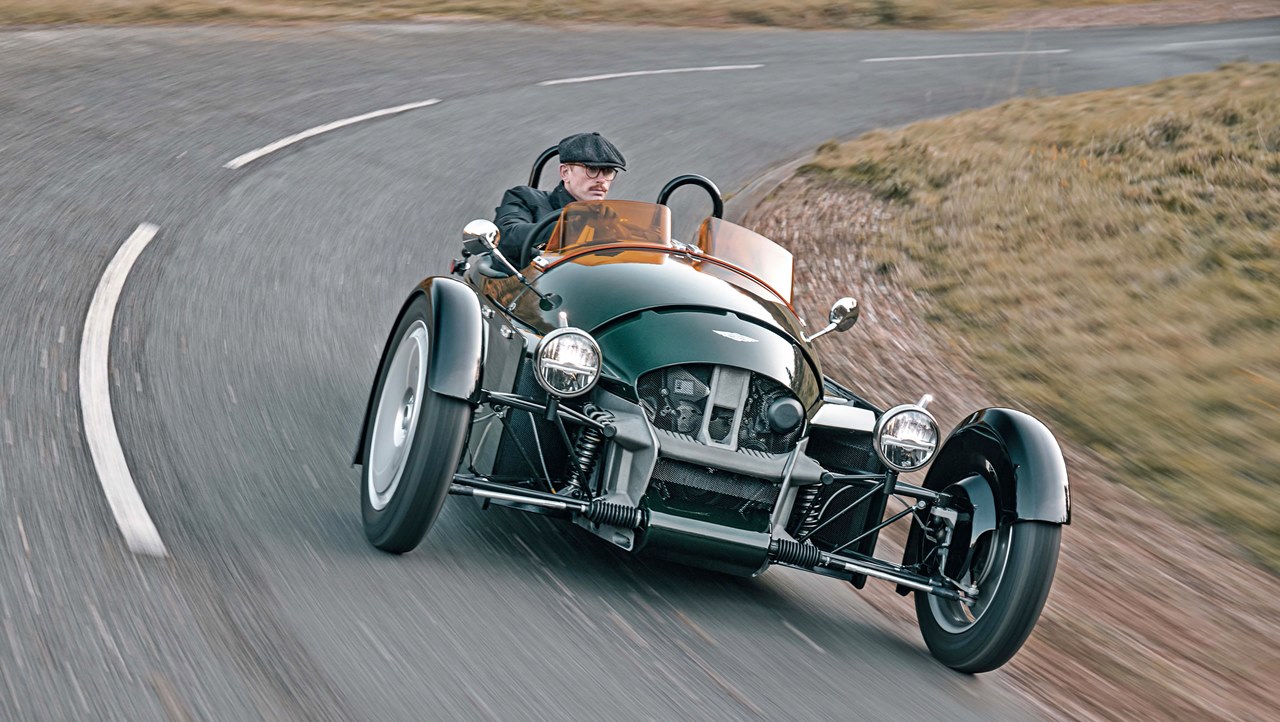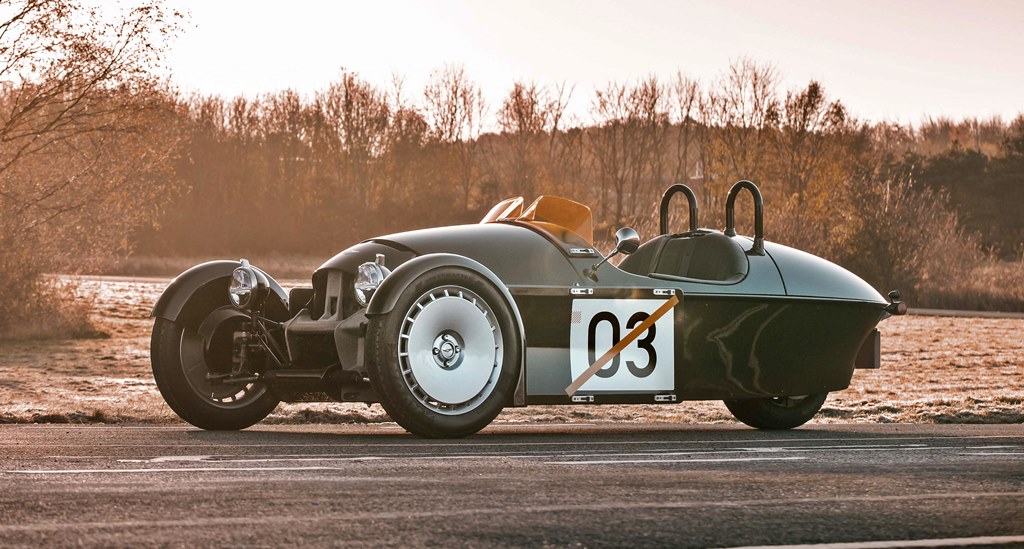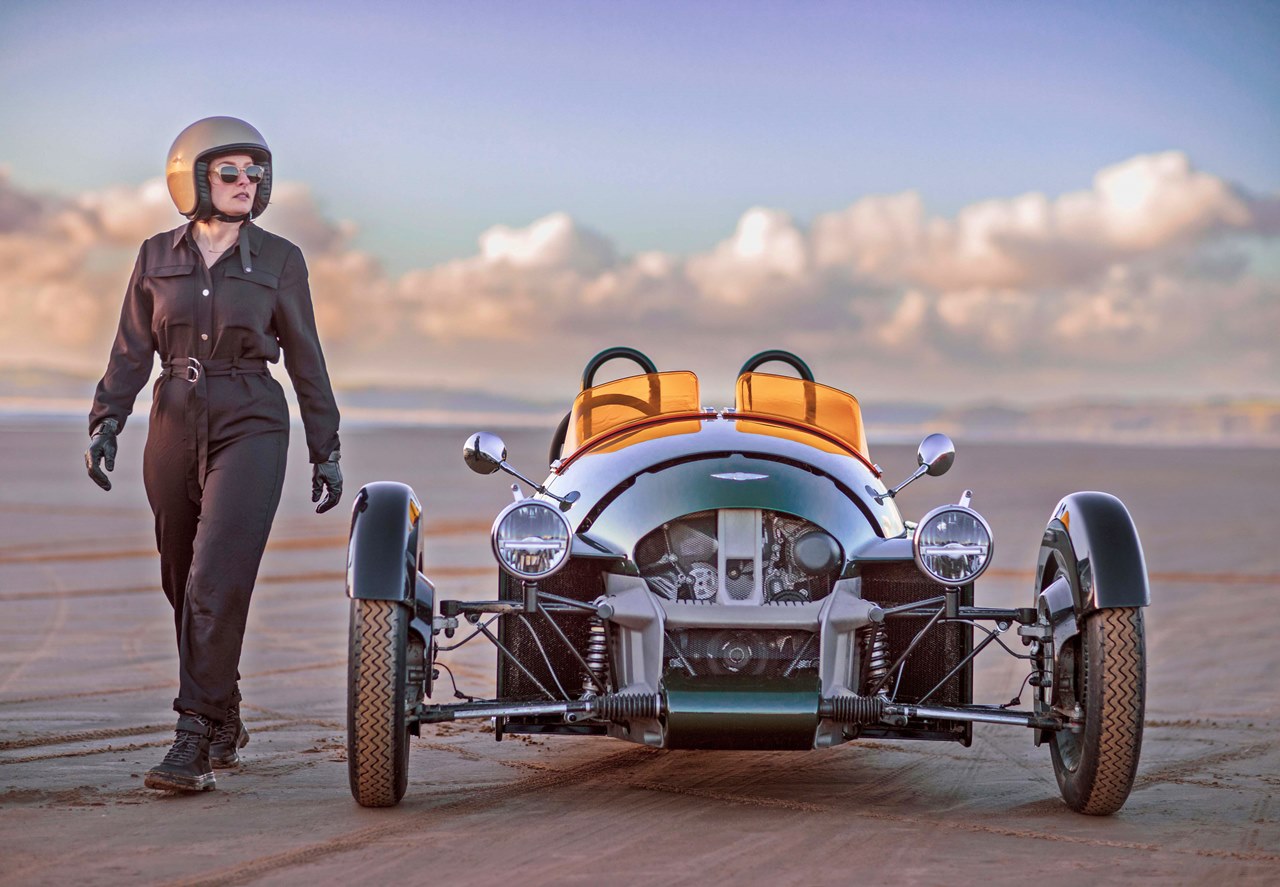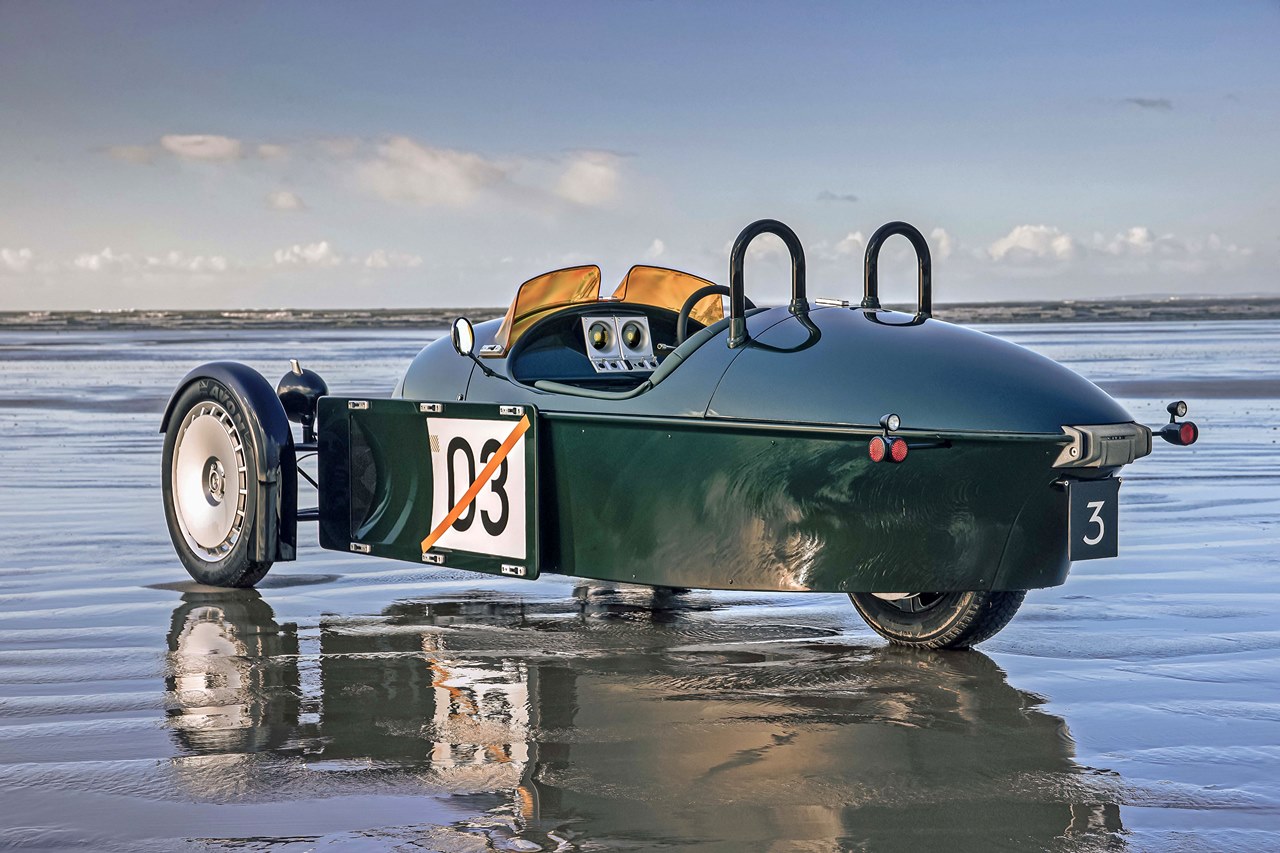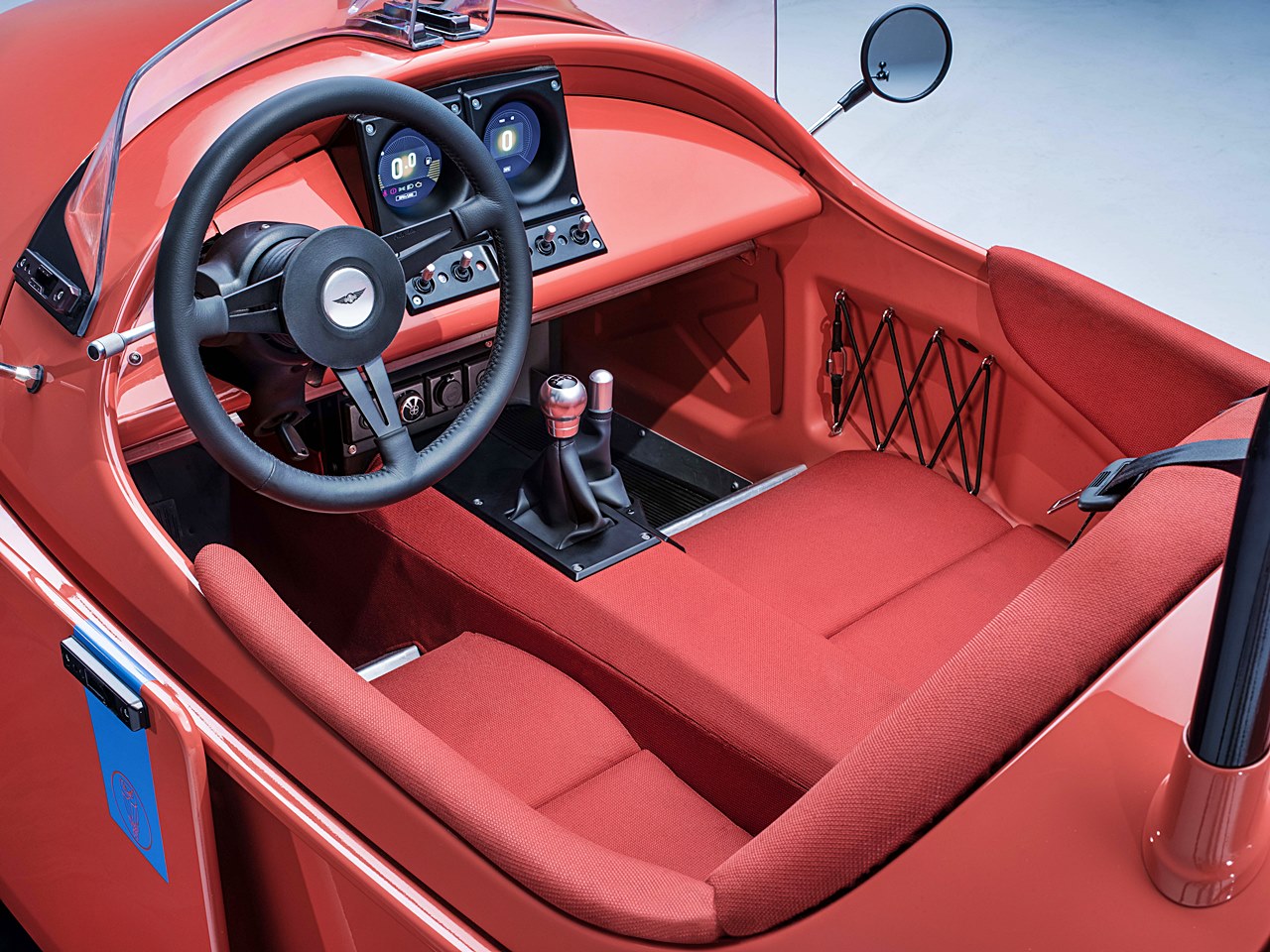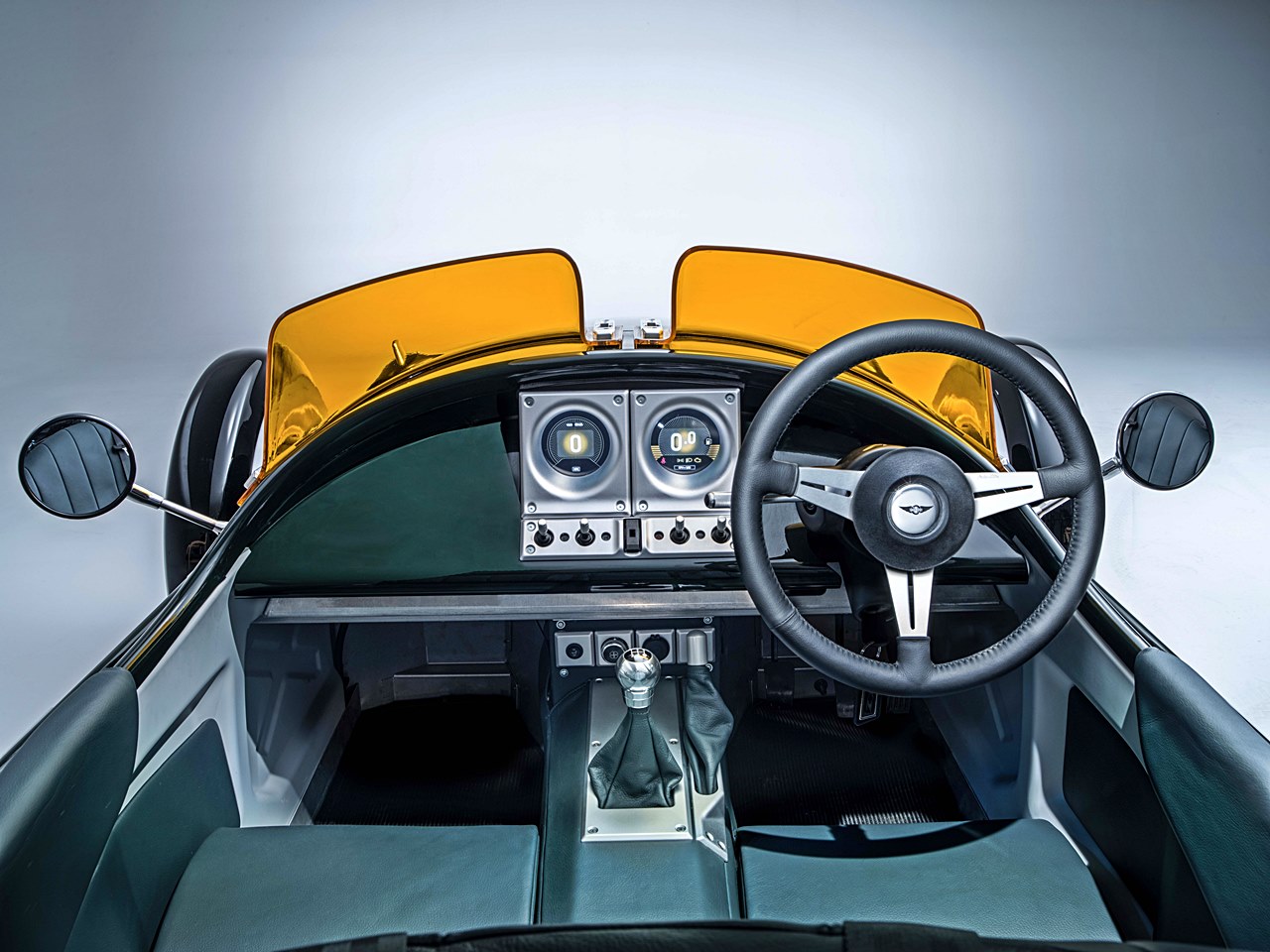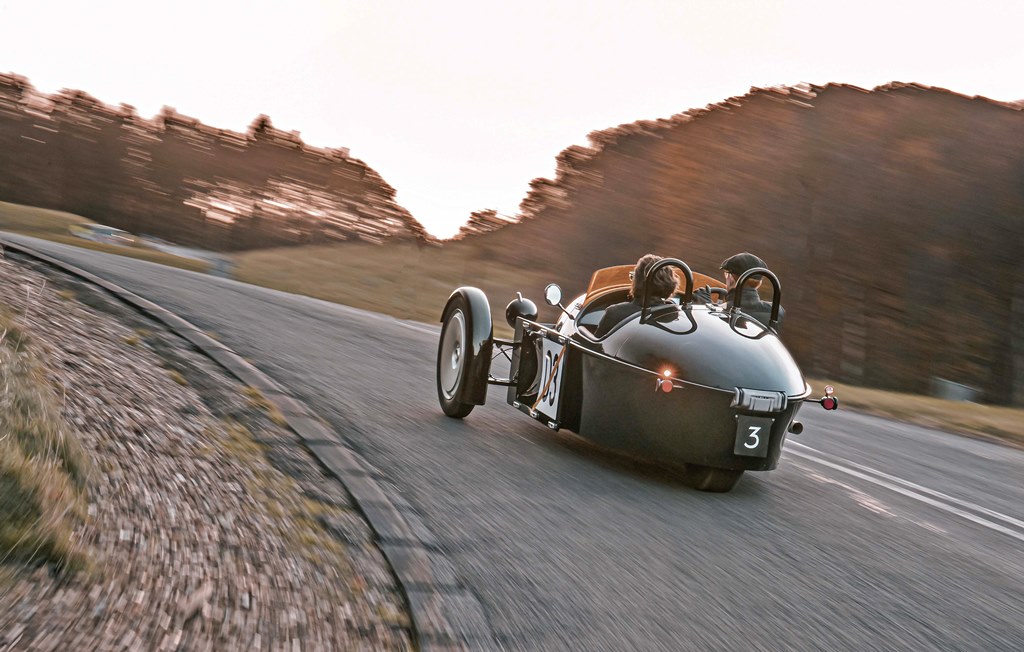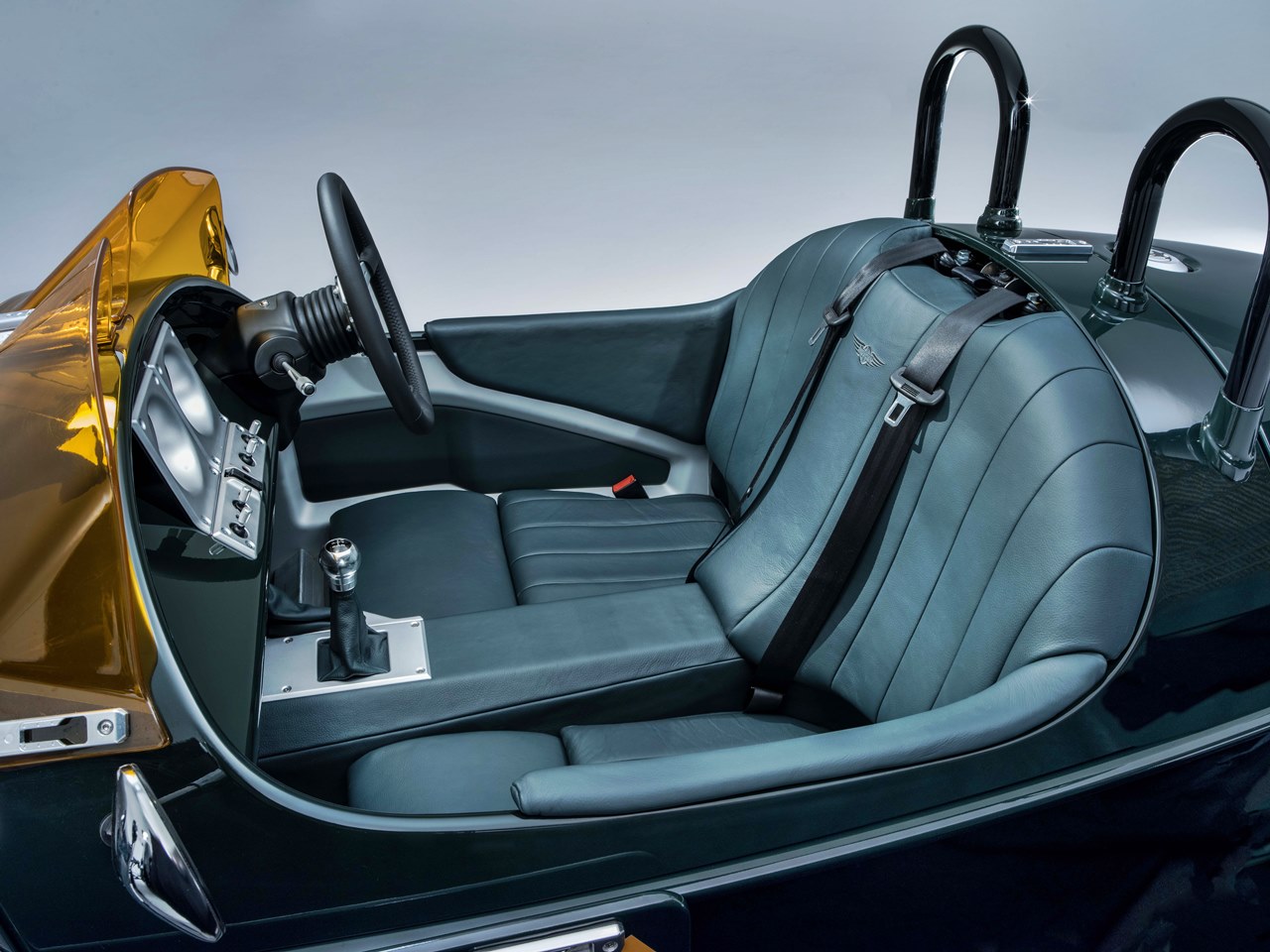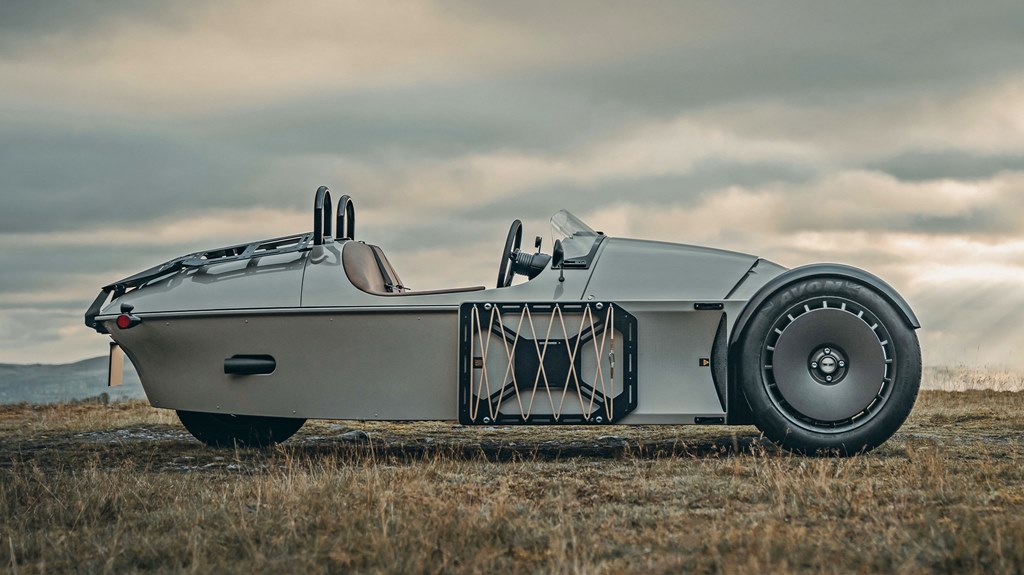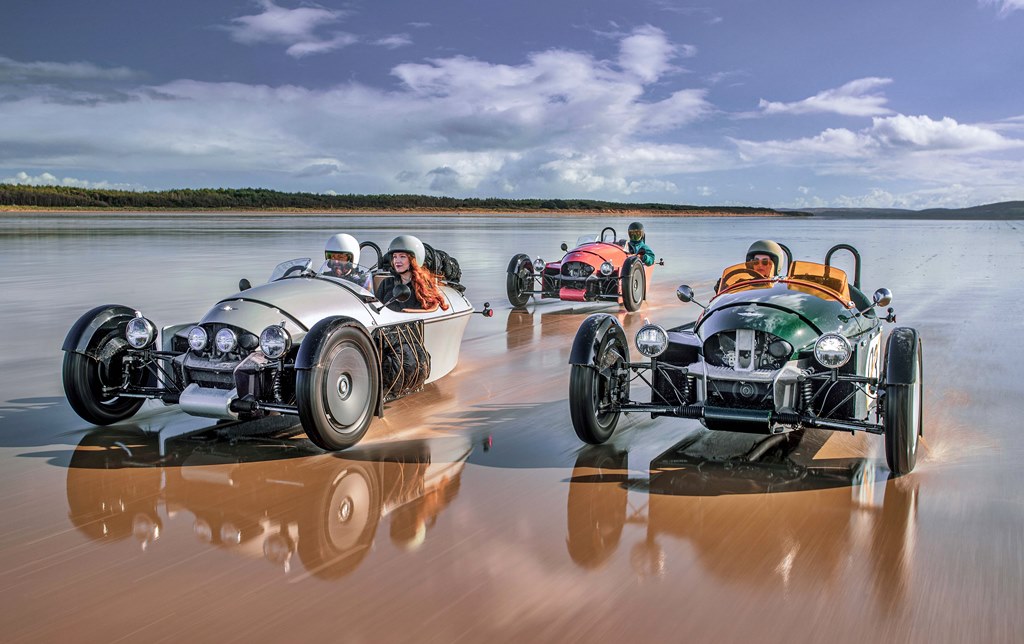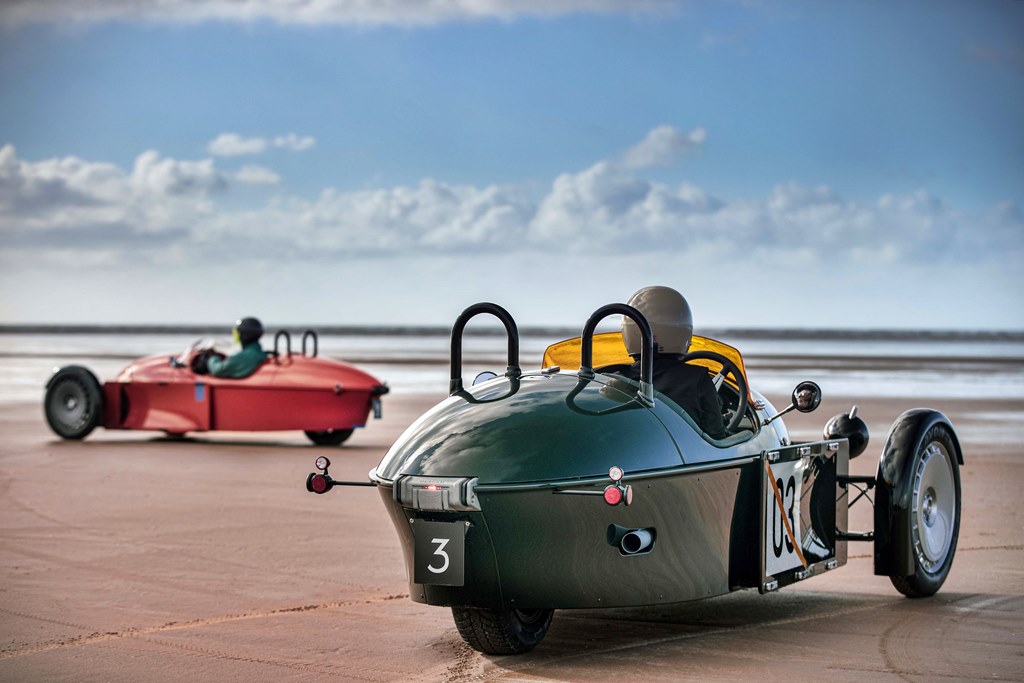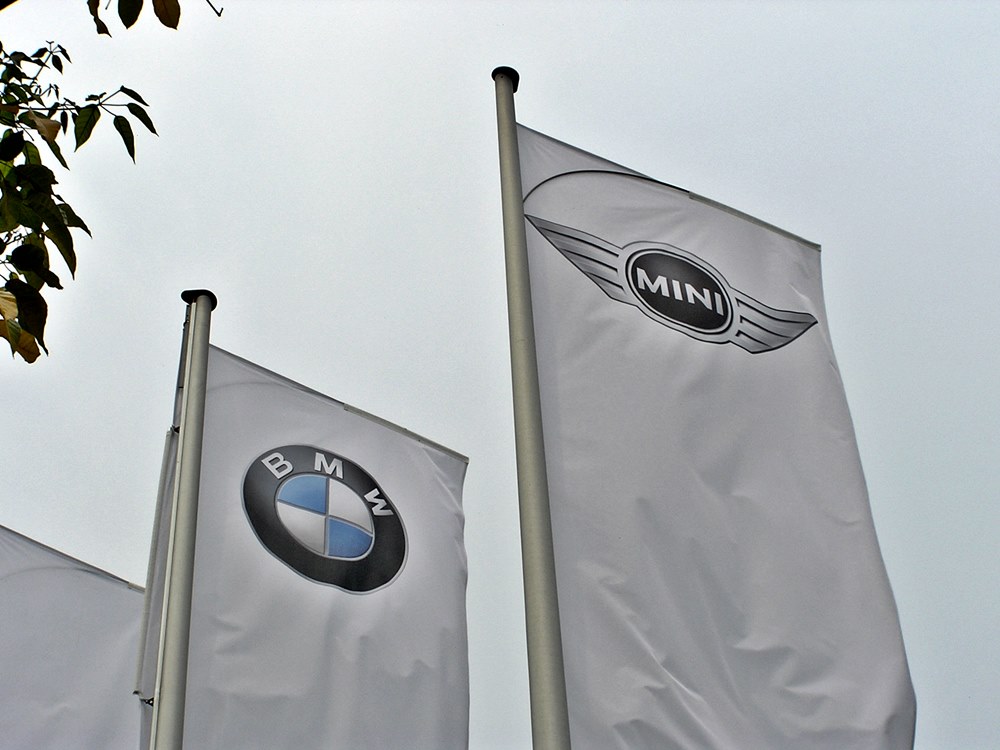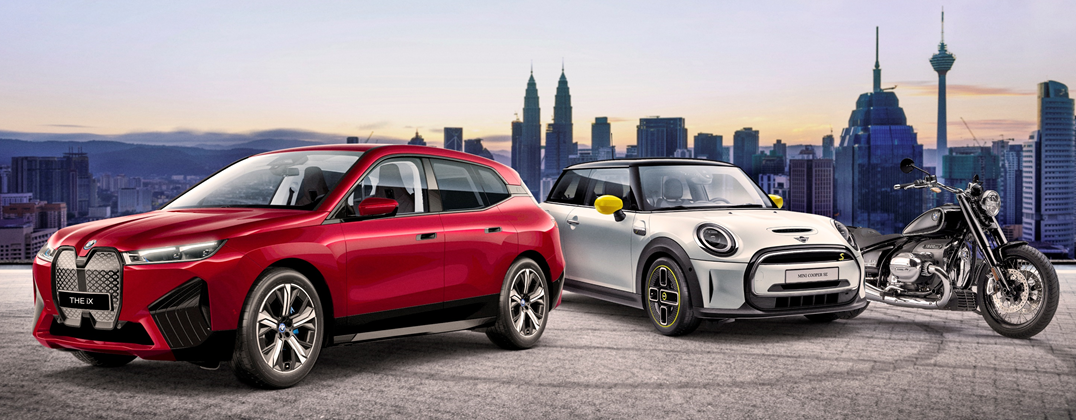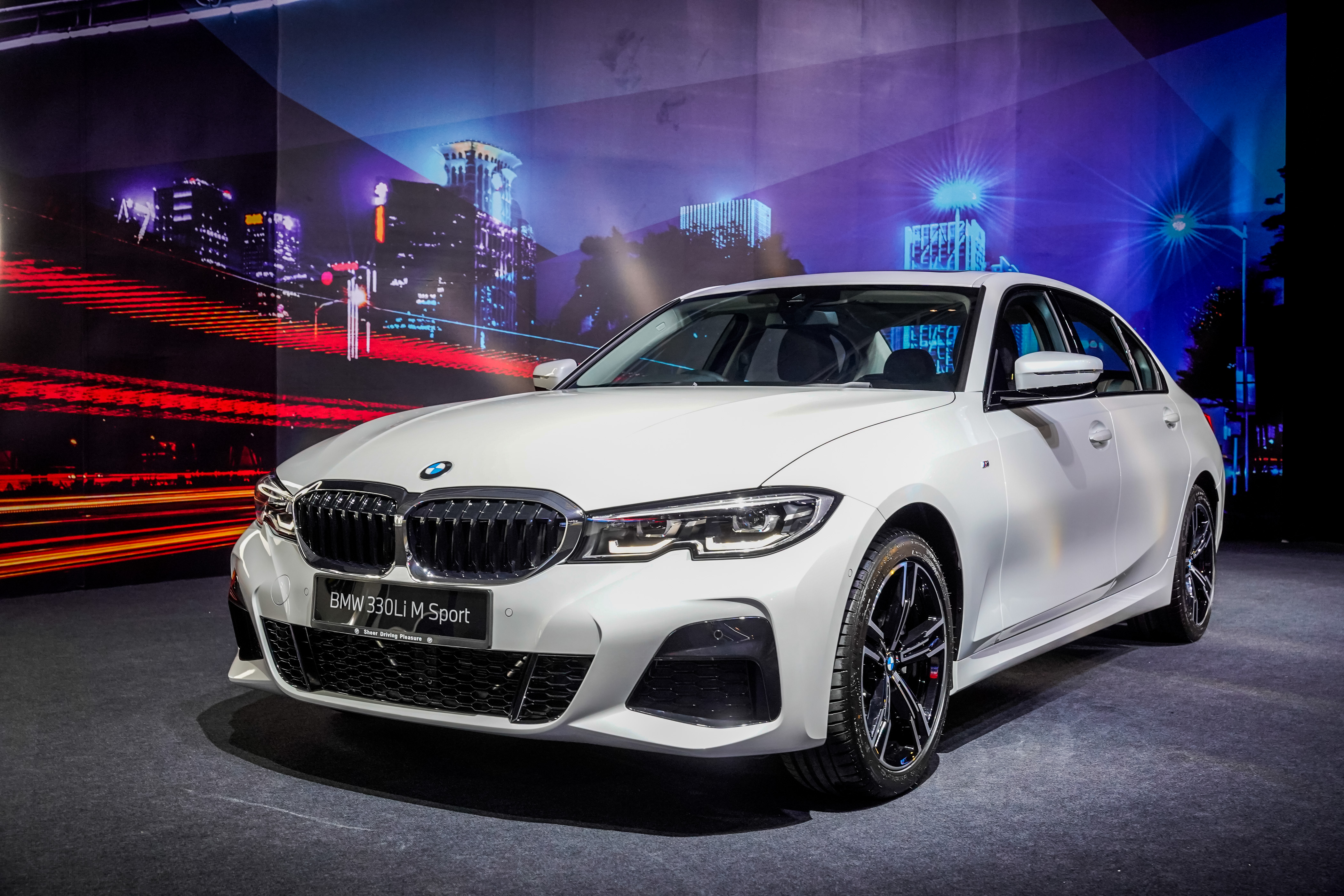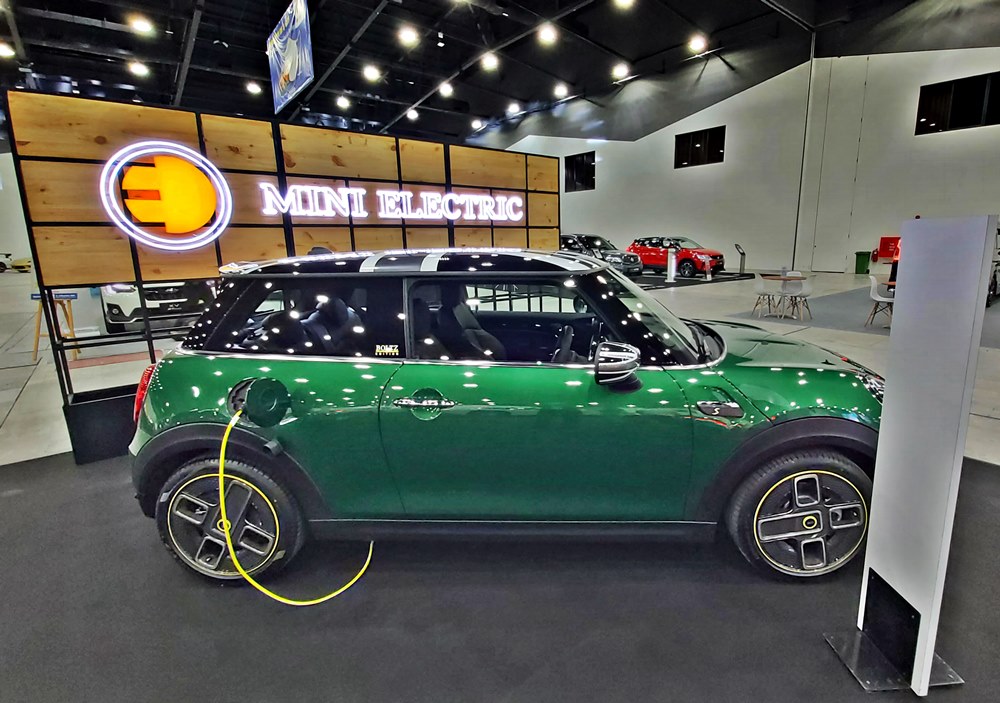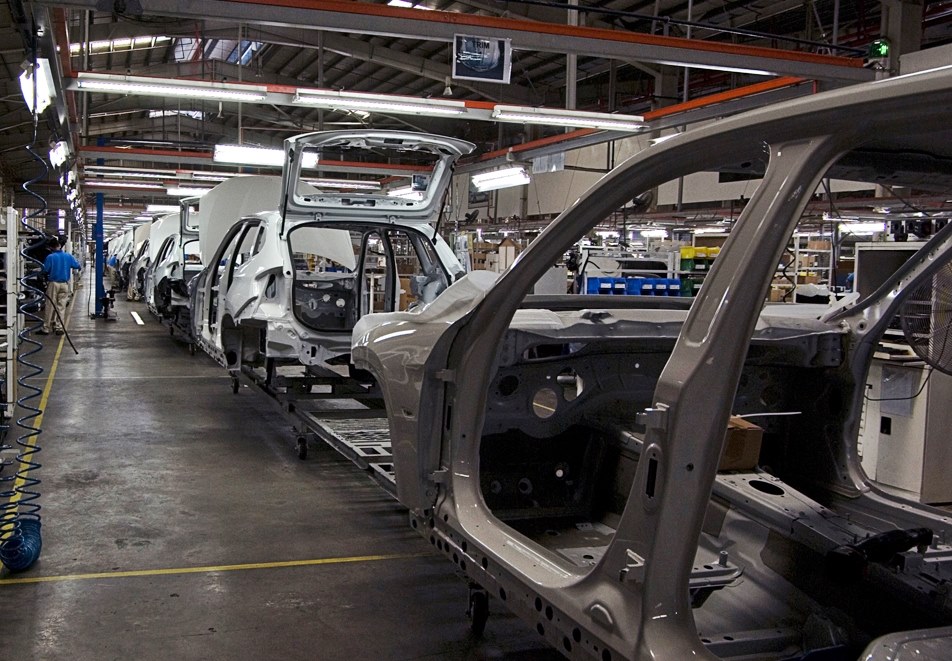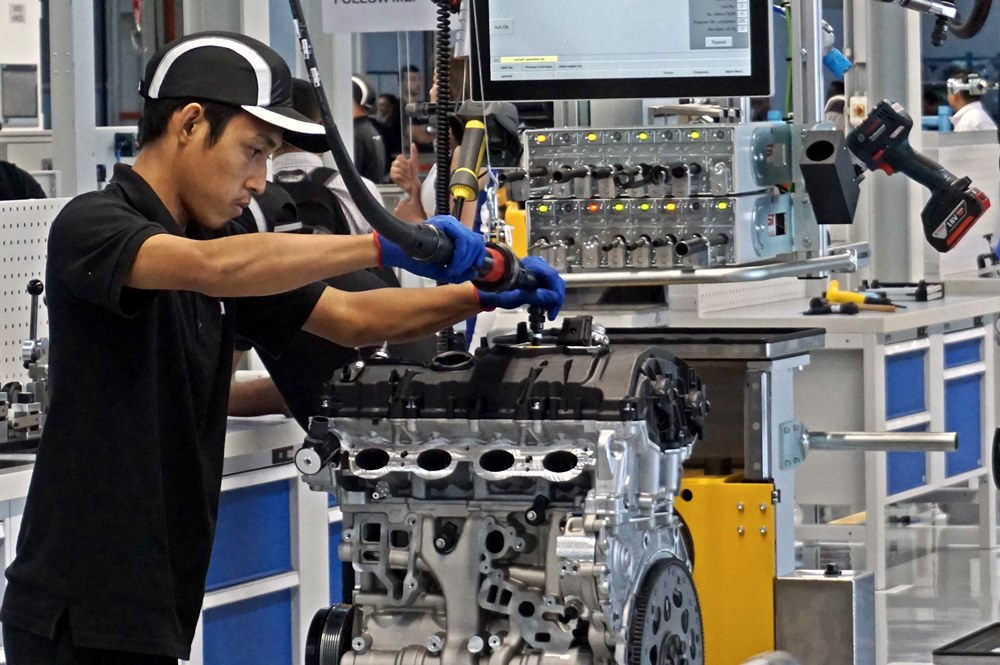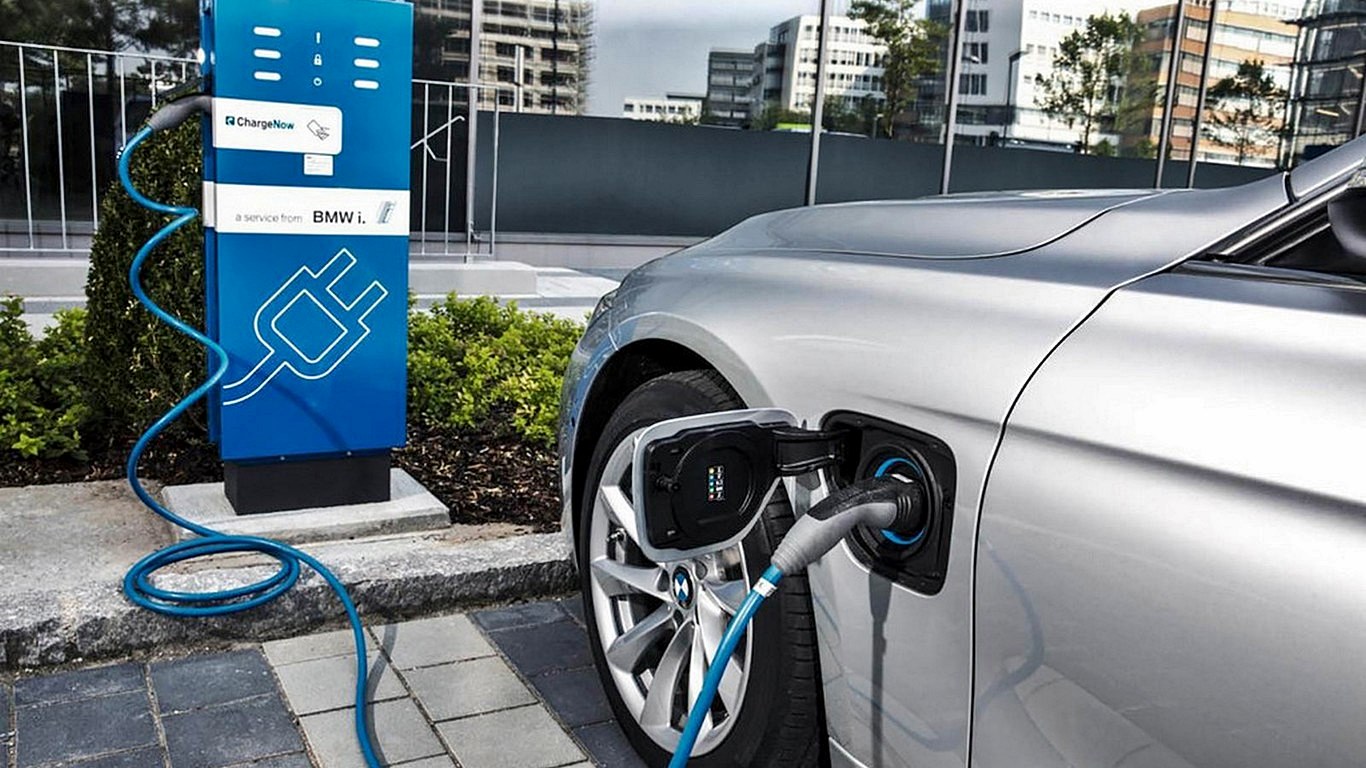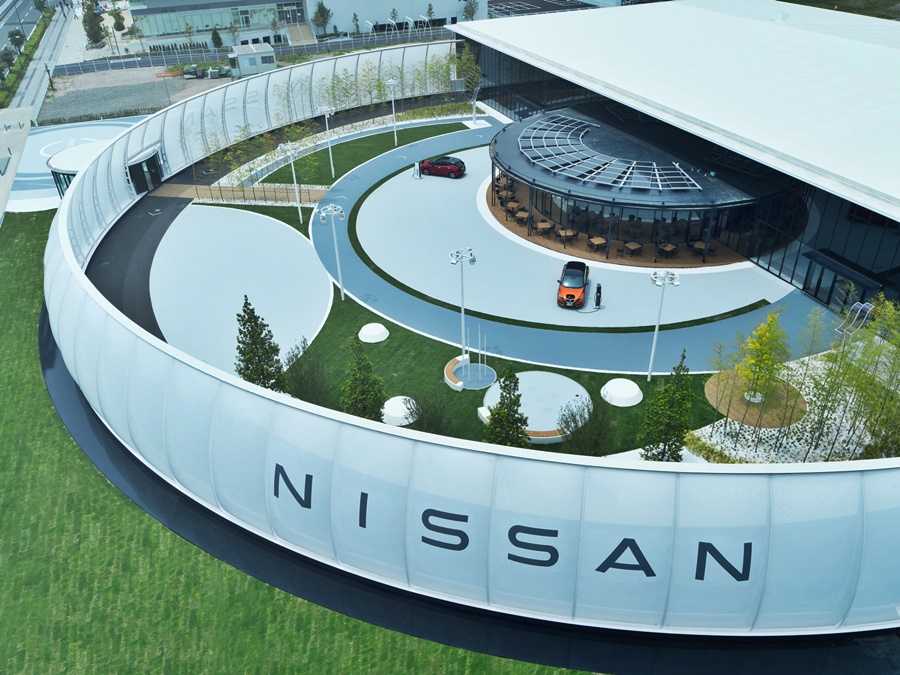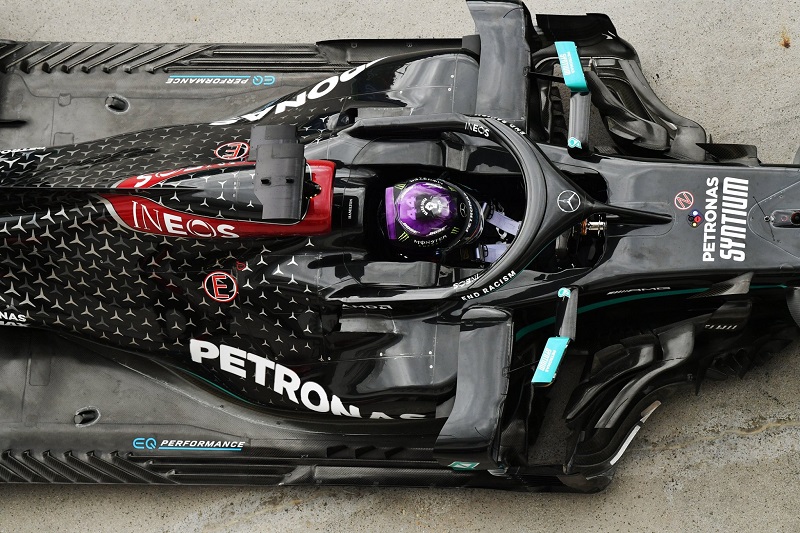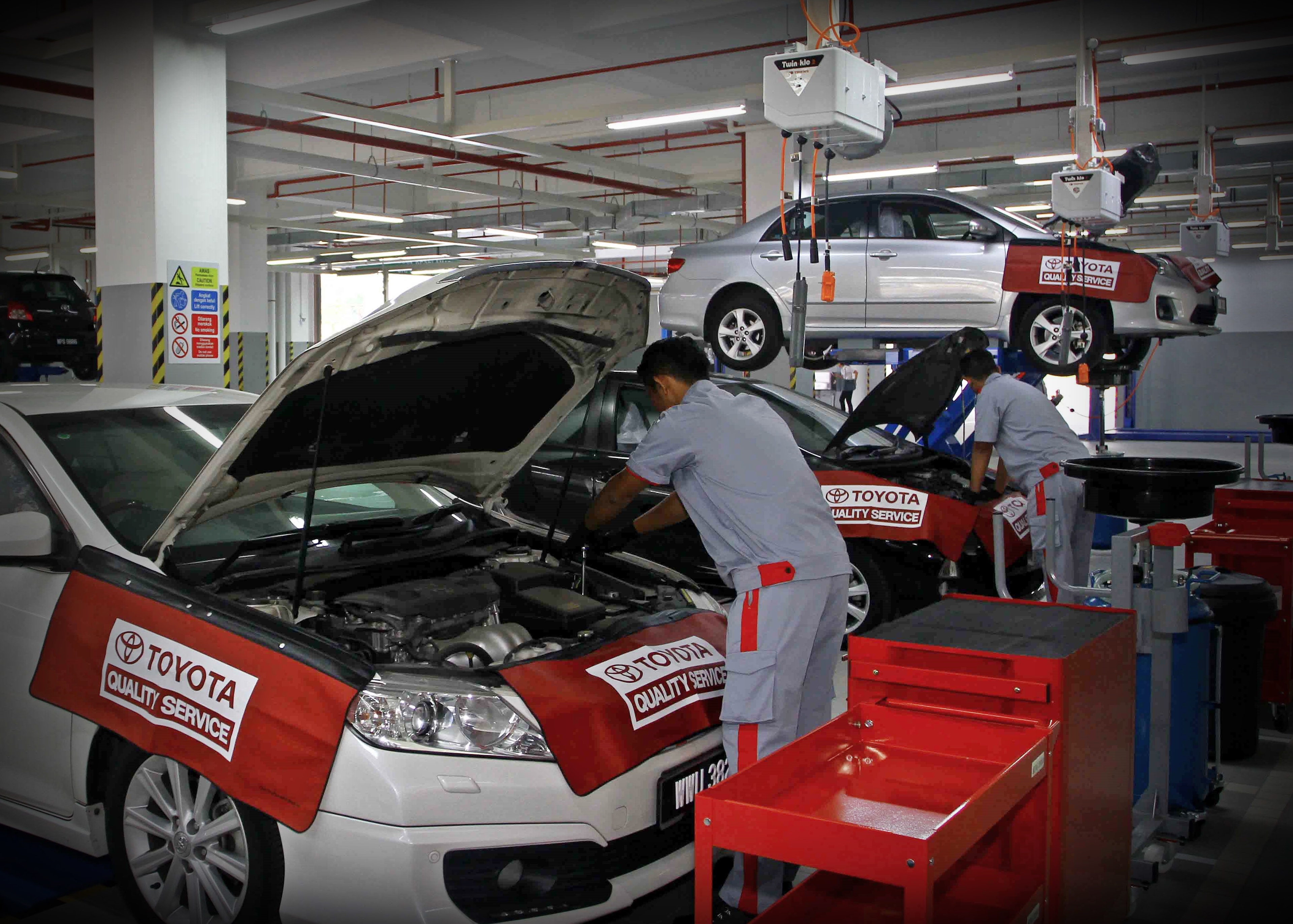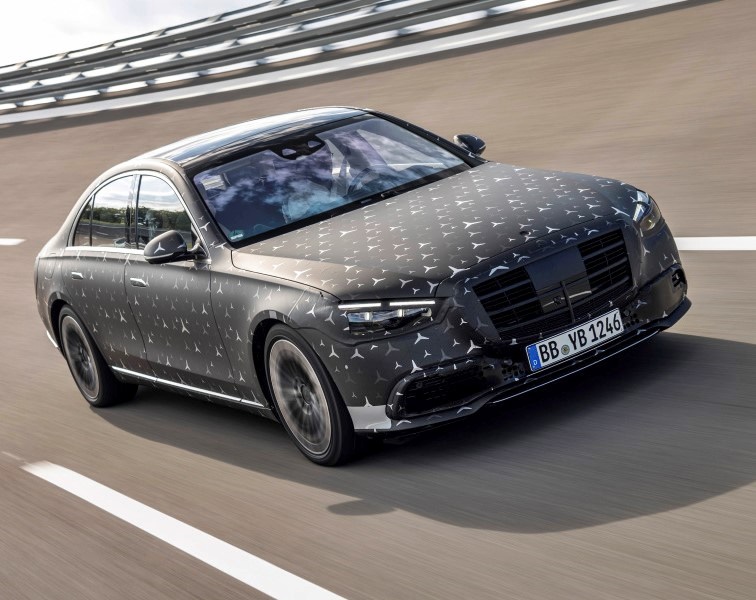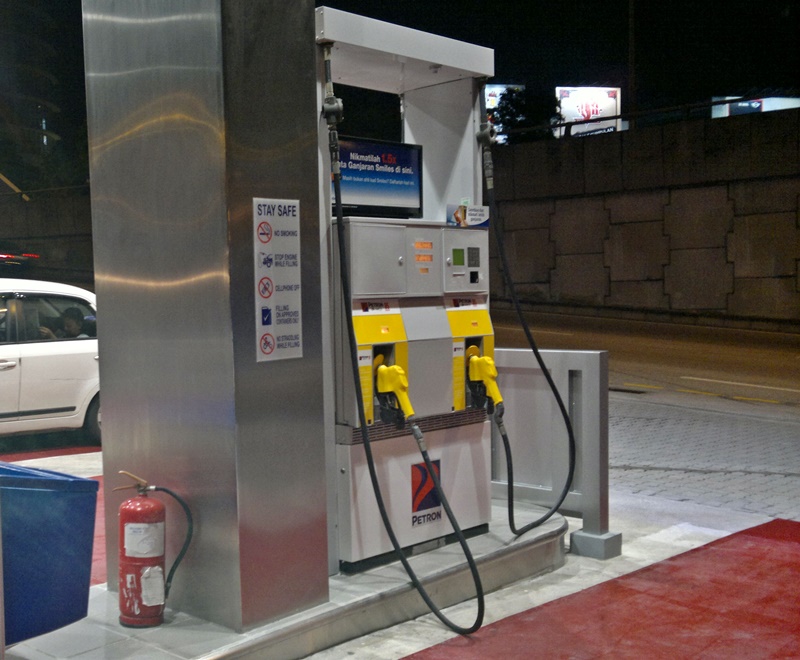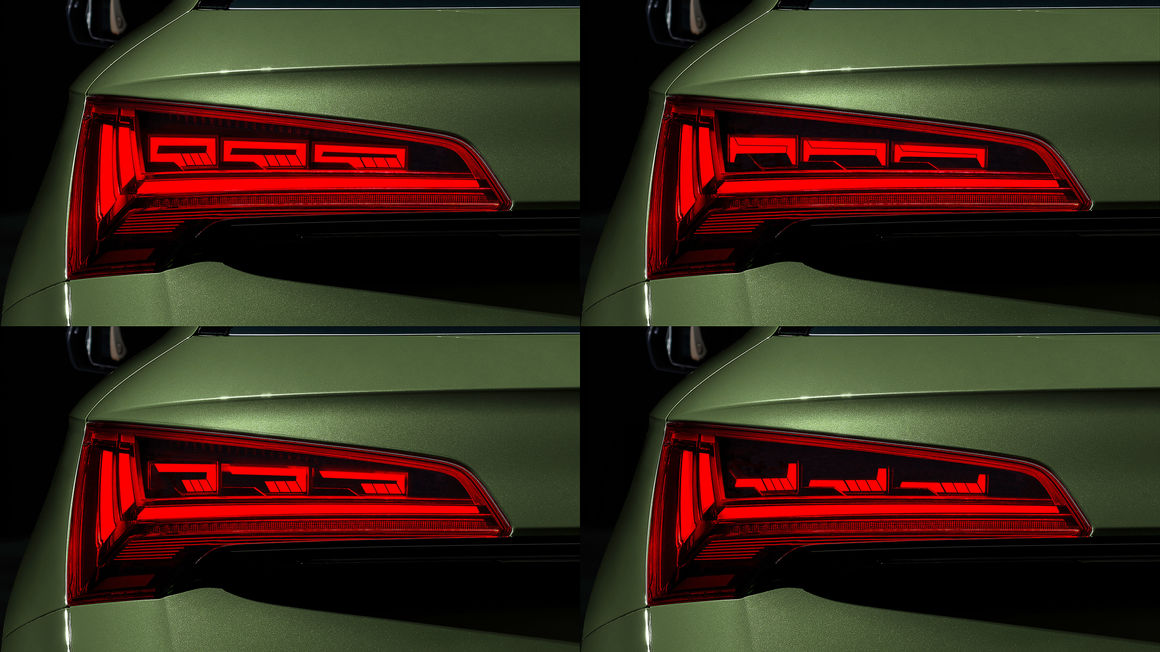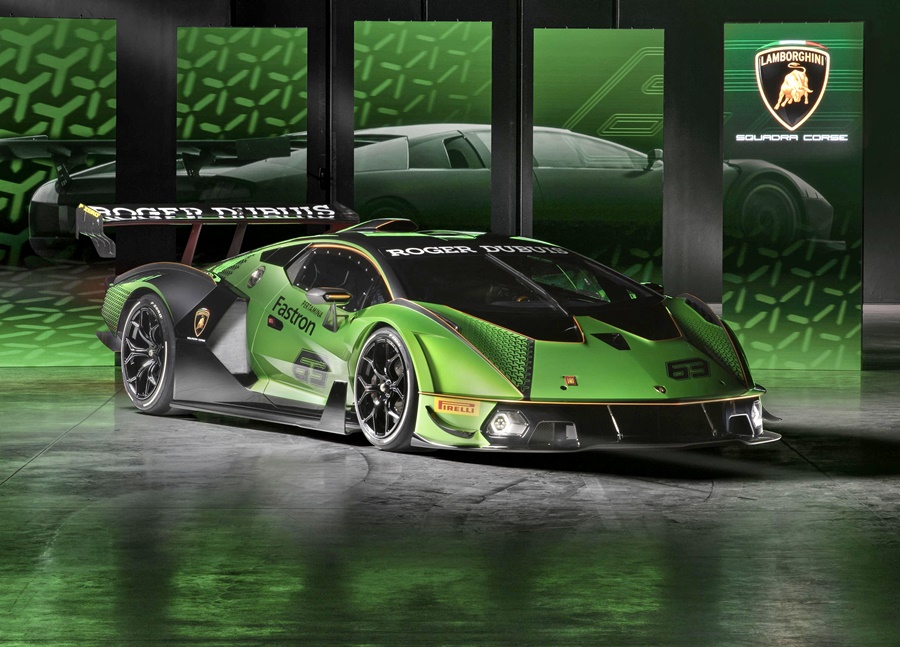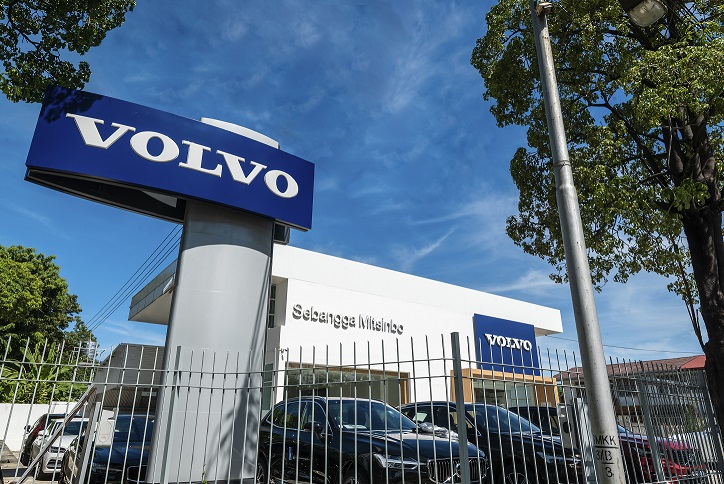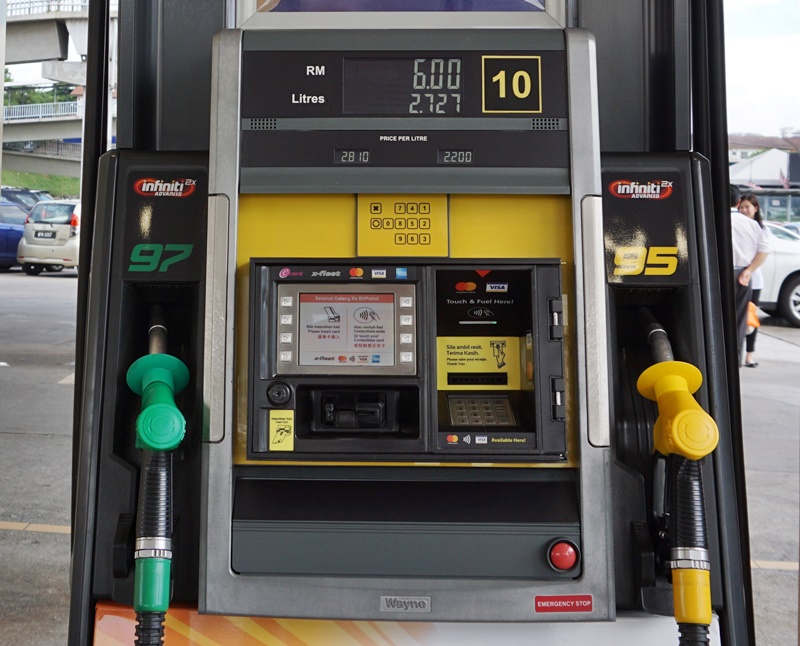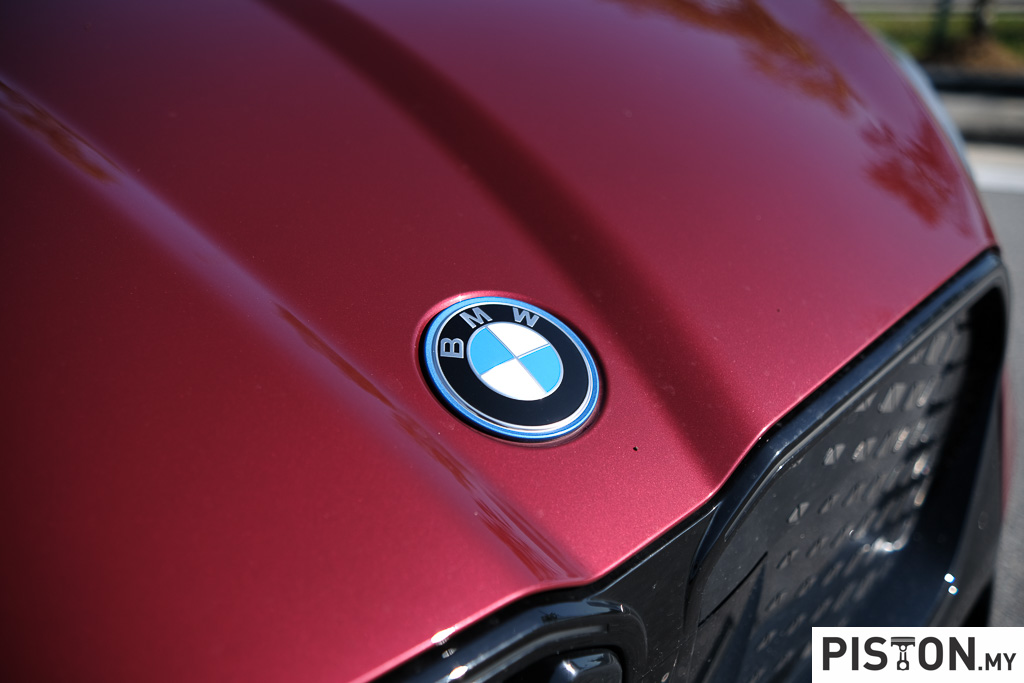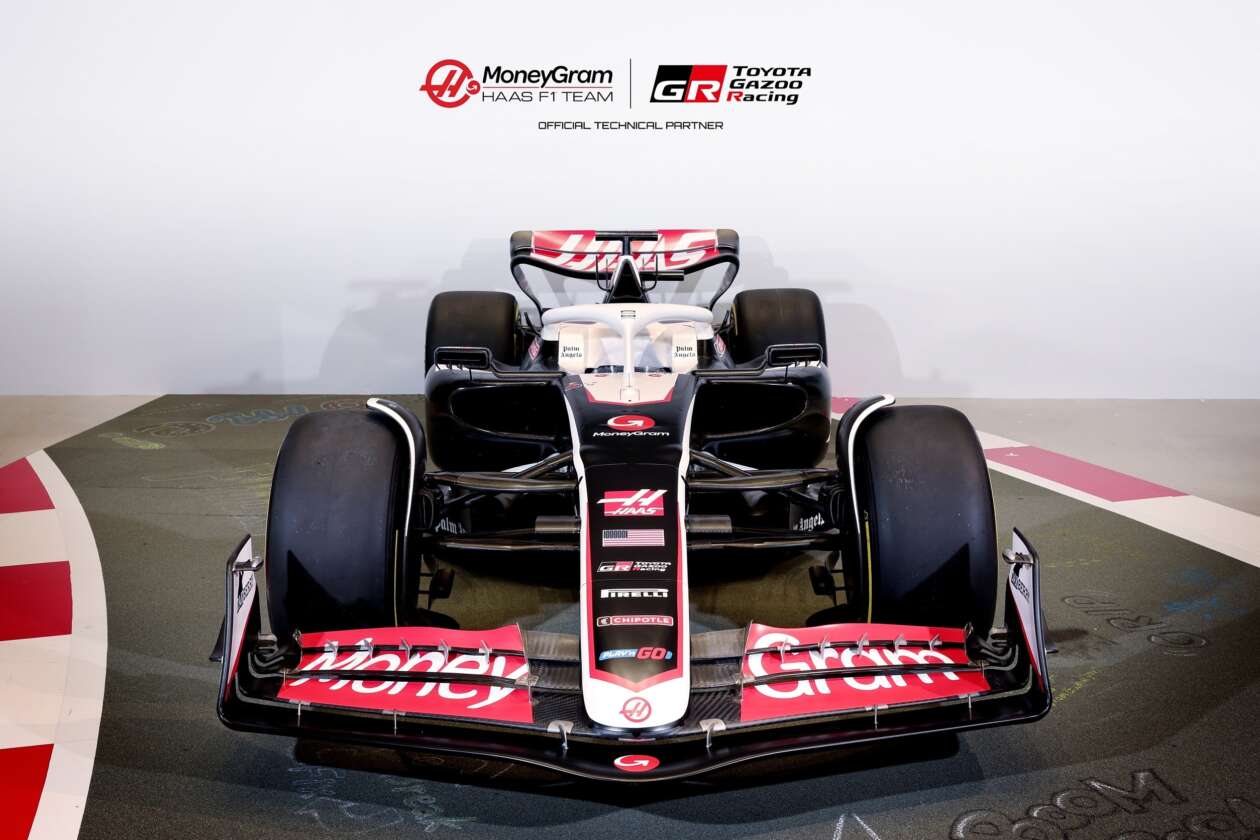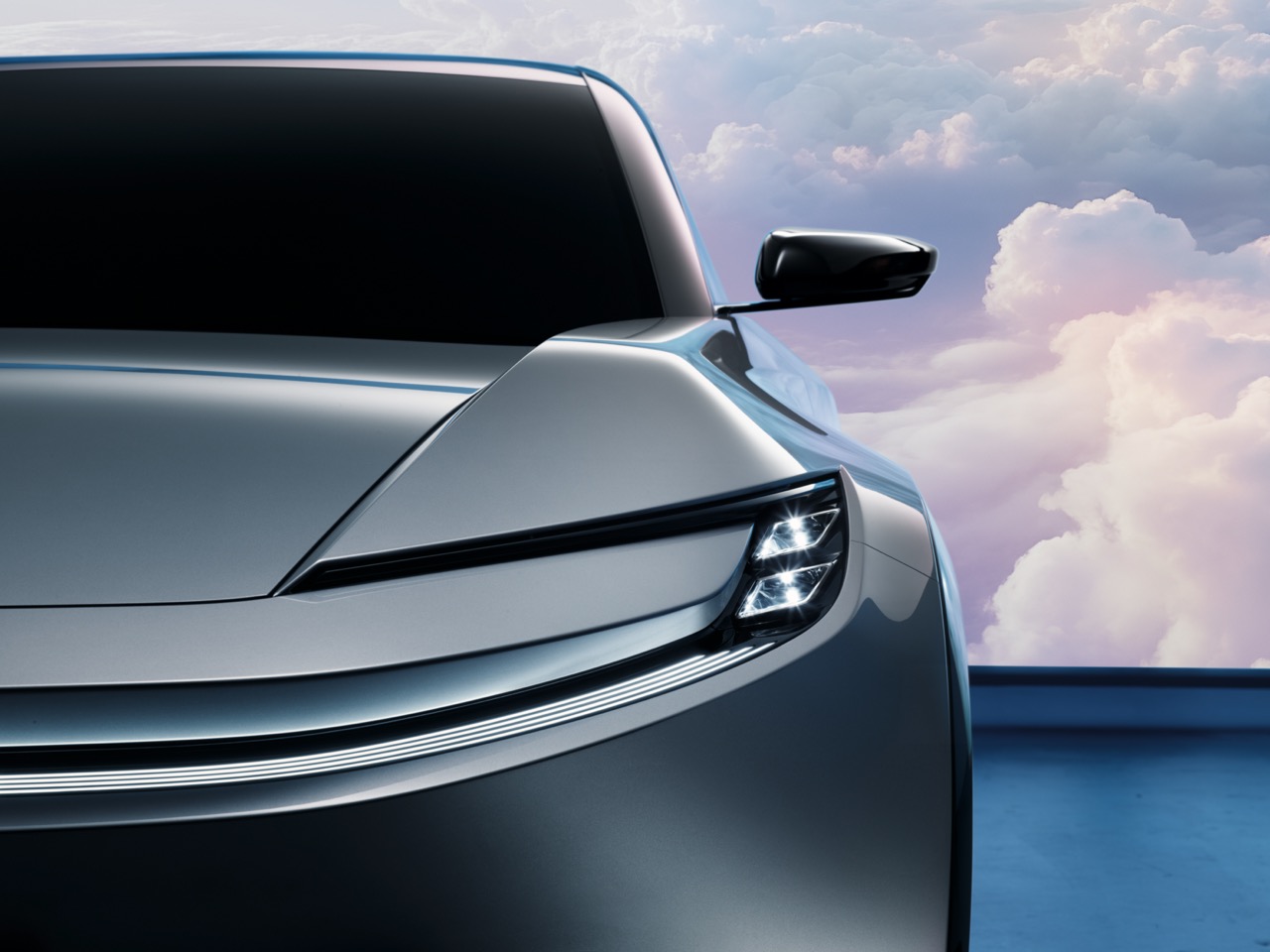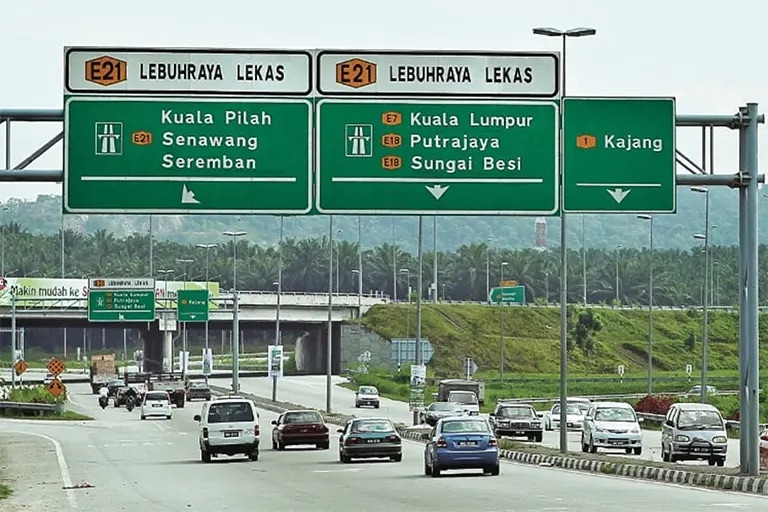The Perodua Myvi, now in the third generation, is currently in its fifth year and has been the country’s most popular model in all that time – and in the 12 years before as well. It’s hard to drive anywhere and not see a Myvi, old or new, around or in the background. While Perodua has worked hard to build the brand image, the product itself still has to be good to become a continuous bestseller. This means it has to be built well, have good space within, look good and of course, be priced affordably. And the Myvi ticks all those boxes, adding further strong points as it evolved and grew up.
The 2022 version is essentially a facelift to keep the model fresh for another few years. It’s inside that there are more noticeable changes, like the larger touchscreen, new steering wheel and a red theme (and only red) for the upholstery which is also leather in the Myvi 1.5 AV we tested. As with every generation of the Myvi, build quality is excellent and the feel is more solid with attention given to tiny details to reduce metal-to-metal contact. Even the bonnet can be kept raised in two positions, a second one more upright for easier access from above.
Developed with Malaysian DNA
The spaciousness of the cabin has always been a strong point of the Myvi, thanks to the fact that Malaysians were involved in the development of the first one alongside the teams from Daihatsu and Toyota. Though Perodua’s role was small (it was more for the Malaysians to gain experience), they nevertheless were able to convince the project team that the interior space needed to be greater because that was what Malaysians wanted. Had they not provided that input (and had it not been accepted), we might have gotten a more compact cabin which the Japanese are okay with.
From the experience of developing that first generation, Perodua began to develop its own capabilities to the extent that they can now do the upper body work themselves. This means that there is more localized thinking in the styling elements which would be more suited to Malaysian tastes and expectations. It also saw the addition of features like the teh tarik hooks as well as the handbag hook on the side of the front passenger’s seat to prevent theft.
Suspension more customised for Malaysia
We also noticed that the handling of the Myvi in its third generation had changed in character somewhat and upon discussion with the Perodua guys, we learnt that with this generation, the suspension settings were specifically tuned to Malaysian requirements, rather than using those provided by Daihatsu in the past. Apparently, this was a ‘victory’ because it meant that the car’s handling could be more suited to our roads and from what we noticed driving the second and third generations is that the current one has a more direct feel with more linear response to changes in direction.
Switch to CVT
While maintaining the same 1.3-litre and 1.5-litre engines with Dual VVT-i, the drivetrain has switched from the conventional electronically-controlled automatic transmission with a torque converter to a D-CVT (continuously-variable transmission). This change helps to squeeze a few more kilometres from each litre of fuel as CVTs are more efficient, especially in urban driving conditions.
Unfortunately, those who still like manual transmissions can’t get them anymore with the Myvi and if you really must have a manual (and you want a Perodua), then you would have to settle for a Bezza, Axia or Alza. And if it is an Alza you want, you should quickly go to a showroom to order one as stocks will be diminishing with no replacements coming since production of the model ended last month.
While some may be critical of a CVT’s feel and characteristics, it would generally be fine for most people. The engineers have tuned the transmission (which, like the engines, is produced in Malaysia) to have an almost similar feel as a torque-converter unit with less of that ‘rubberband’ acceleration.
The transmission also improves acceleration which can be slightly enhanced by selecting the ‘S’ mode. But conversely, as we discovered, you don’t get the same level of engine braking. For this reason (and it’s also present in hybrids), there is a ‘B’ mode which can be used to assist in slowing down. It helps to decelerate the car more positively so you don’t have to use the brakes excessively, especially when going down a steep slope. So those who frequent the Genting Highlands road would want to use it a lot so their brakes don’t end up smoking.
It’s interesting that, besides the ‘S’ (Sports) mode in the transmission, the Myvi (1.5 version) also has a PWR mode. Both would seem to do the same thing which is enhance performance, usually acceleration, but they actually have different purposes. When you select ‘S’ mode in the transmission, it is like downshifting with a manual and the ratio is lowered. This improves control when driving on winding roads.
When you press the PWR button, you are going into a ‘sports mode’ whereby the engine programming is altered to give a boost to performance. Acceleration becomes quicker but at the expense of some fuel economy. So you get two ways to enhance performance, depending on the road conditions.
Perodua says that with the D-CVT, fuel consumption is 5% lower than before and for the Myvi 1.5 AV that we tested, the claim is 21.1 kms/litre. In the old days (before 1990s), verifying claims was tedious as you had to top up the fuel tank and then refill it again after driving some distance, and calculate the consumption from the fuel used – which wasn’t necessarily accurate.
These days, an on-board computer tells you not just the average consumption but also consumption in real-time as well as the range possible with fuel remaining in the tank. In our case, we actually got a bit better than the claim after a 2-day period, achieving 22.5 kms/litre. Much of this was highway driving and in city driving, it went to as low as 13.5 kms/litre at times due to congestion. That’s when the Eco Idle system which automatically shuts down the engine during long periods of standing still helps avoid wasting fuel.
Having such good fuel consumption means the tank can be smaller and the one in today’s Myvi’s is just 36 litres. The tank in the first Myvi had a 40-litre capacity so reducing it by 4 litres has also meant almost 3 kgs in weight-saving with less fuel.
More active safety systems
When this generation of the Myvi was introduced in 2017, its Advanced Safety Assist (ASA) system was an impressive new addition that moved active safety in this class to the next level. While ASA has continued to improve, the scope of safety systems for the Myvi has also broadened and the expanded package is now known as Perodua Smart Drive Assist (PSDA).
While including ASA which is essentially to provide automatic emergency braking (AEB), PSDA adds Driving Assist, Parking Assist and Headlamp Assist to help the driver in various ways, not just to avoid accidents. For instance, Driving Assist has Adaptive Cruise Control (ACC) which allows the car to travel at a set speed but adjusted to maintain a safe gap from the vehicle in front when necessary. There are also systems to keep the car in its lane and if the driver doesn’t do so, the system will apply pressure to guide the car back into its lane. We found the alerts rather intrusive as they often occurred but they also served to make driving a bit more ‘disciplined’.
ASA and some systems of PSDA use a camera mounted on the top of the windscreen. This is a lower-cost approach (appropriate for a model like the Myvi) than having camera and radar, which more expensive models have. Though the camera works well enough, there are some conditions where its view might be obscured, eg during heavy rain. This means that the system is ‘blind’ and that has implications on its ability to detect other vehicles ahead. Perodua acknowledges that the system is not 100% perfect, which is acceptable, and that drivers still need to pay attention. In any case, when a system is inactive, the driver will be warned by a message on the instrument panel.
One of the new additions with the PSDA system is Rear Cross Traffic Alert (RCTA) which is really great when reversing. The camera at the back shows a limited field of view but the sensors can detect further to either side to detect approaching vehicles. The driver will be alerted so he can stop instead of continuing to reverse and possibly having an accident.
The other thing which we were surprised to see on the instrument panel was the position of the front wheels (when reverse gear is engaged). It’s a very rare feature and useful when maneuvering the car in tight spots. Along with the guide lines on the image of the rear view, it’s very easy parking the Myvi and there should be no excuse for bad positioning that gets your car publicized in Facebook’s Stupid Parking Idiots page!
One thing that has to be said about the controls and switches (and this is something we usually assess) is how easy they are to operate as well as how intuitive their operation is. Admittedly, everything can be found in the manual (which can be found online as well) but not everyone reads it. So the mark of a well designed cockpit layout would be that a driver can make settings intuitively. The Myvi gets top marks for this and someone new to the car will be able to use the many features right away.
Hard to beat package
The Myvi 1.5 AV that we tested starts from RM58,800 (without insurance) and with the amount of stuff that Perodua has put in, it’s certainly great value for money. The price range for the model goes down to as low as RM45,700 but when you pay less, you obviously get less too. Nevertheless, as an overall package, the Myvi would be hard to beat at the price point of each variant.
To locate a showroom to view or test-drive the latest Myvi or other Perodua models. visit www.perodua.com.my.
New Perodua Myvi launched with 5 variants, priced from RM45,700 to RM58,800




